

Introducing the most exciting performance-focused catamaran to hit the sailing world, the Open Waters 40 is an all-electric catamaran that leverages the latest in yacht construction technologies designed to maximize the thrill of sailing yet still provide the creature comforts of a multihull.
Great handling and speed.
The ESC40 is a 40-ft catamaran designed to be two to three times faster than the typical cruising cat – using carbon fibre to reduce weight and provide increased hull strength.
The twin helm stations are covered by a solar cell-covered roof and come with a 59m2 main sail in addition to three headsails: Jib 26 m ² , FRO 65 m ² and Asail 121 m ² .
The hull is rated to handle boat speeds in excess of 20 knots. With curved retractable daggerboards providing better upwind handling and performance at speed.
The retractable rudders, together with the low draft of 2 ft, allow the boat to cruise in shallow waters and to be beached on the bow or stern.
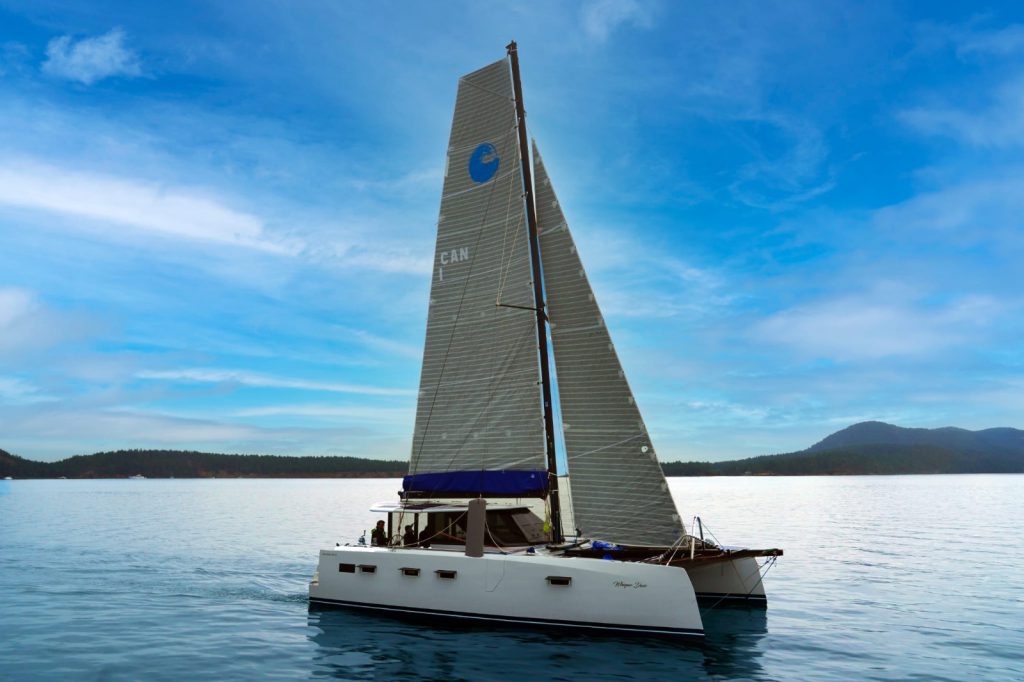
Regenerative Energy
Thanks to the low weight, higher boat speed and the solar/hydro regeneration systems on-board. The boat is a 100% energy self-sufficient.
The twin electric drives and advanced battery technology allows for quiet, fossil fuel-free cruising.
Using 10 kW motors, the close-quarter power and handling is unrivalled. The folding propeller generates electricity while sailing together with the roof-mounted solar cells, recharging the battery while in operation.
The integrated drives, battery and battery management systems are intelligently inter-connected and provide real-time and predictive insights on power consumption, generation and operational range.
The boat comfortably accommodates four adults and two children, and is sure to bring you all modern comforts such as a 400L water reserve shower and an electric stove.
The hull interior boasts 6’4” of head room with the coach offering even more generous space with 6’8” of head room up to 7 at the aft dinette. The wet deck, spacious with 300 ft ² between hulls features the main stateroom.
Each hull features three deck hatches and six portlights for excellent ventilation while the trampoline across the beam is 305 ft ² of play, relaxation and dolphin viewing.
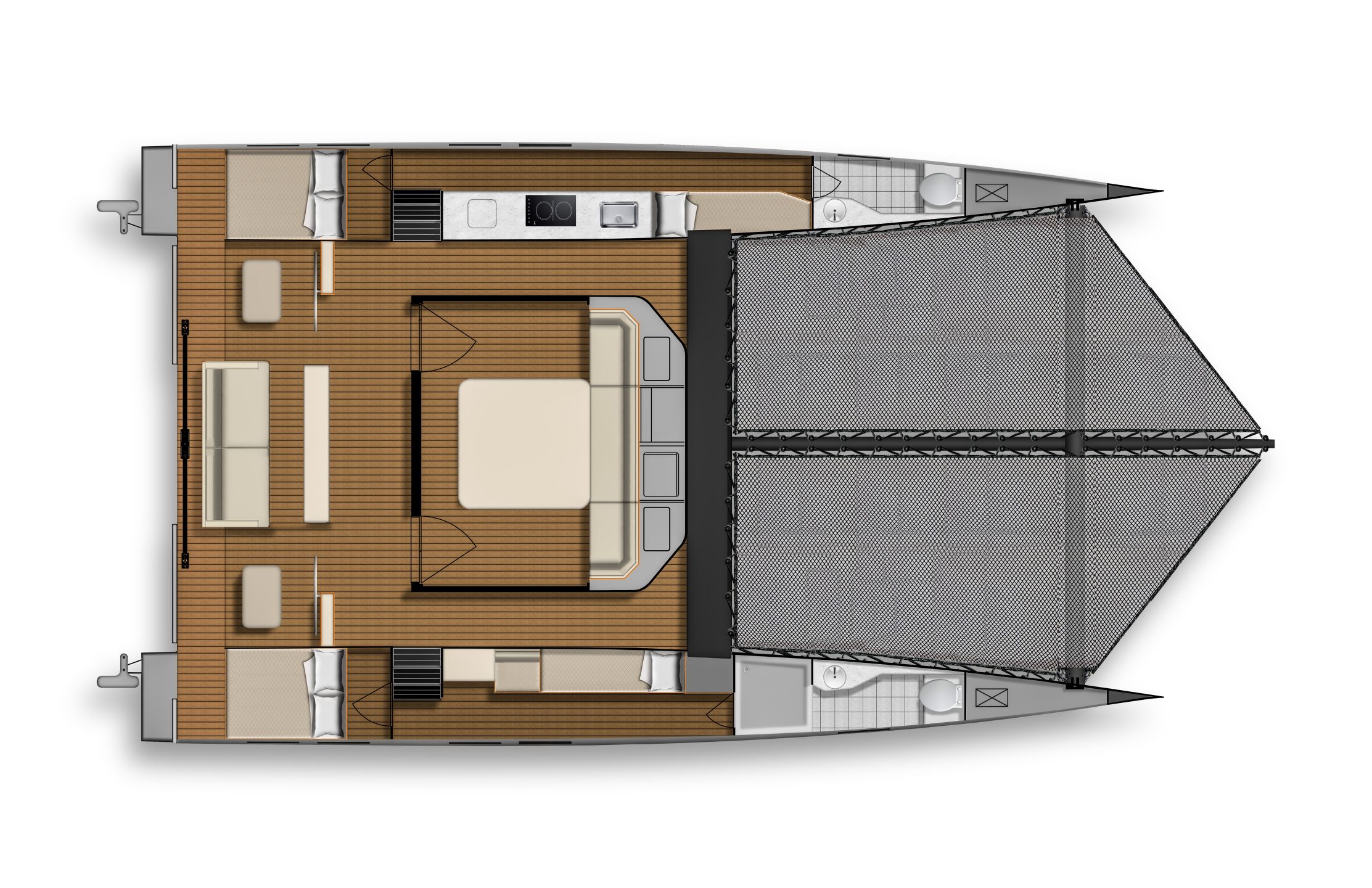
Our unique construction techniques allows us to manufacture the boat in Canada in a quarter of the time compared to traditional boat building.
We can also build and ship your boat in as early as four months, greatly surpassing the industry standard of 12+ months.
From order to build and delivery, our price compares very favourable to other fast cats.
Faster, cheaper delivery
The boat can be packed in a standard 40ft freight container and be shipped safely anywhere in the world at a much lower cost (up to $50,000 savings) and in a fraction of the time.
Boat owners can now also ship their boat one or both ways between North America, the South Pacific, Mediterranean or the Carribean for a one way cruise or an overwintering.
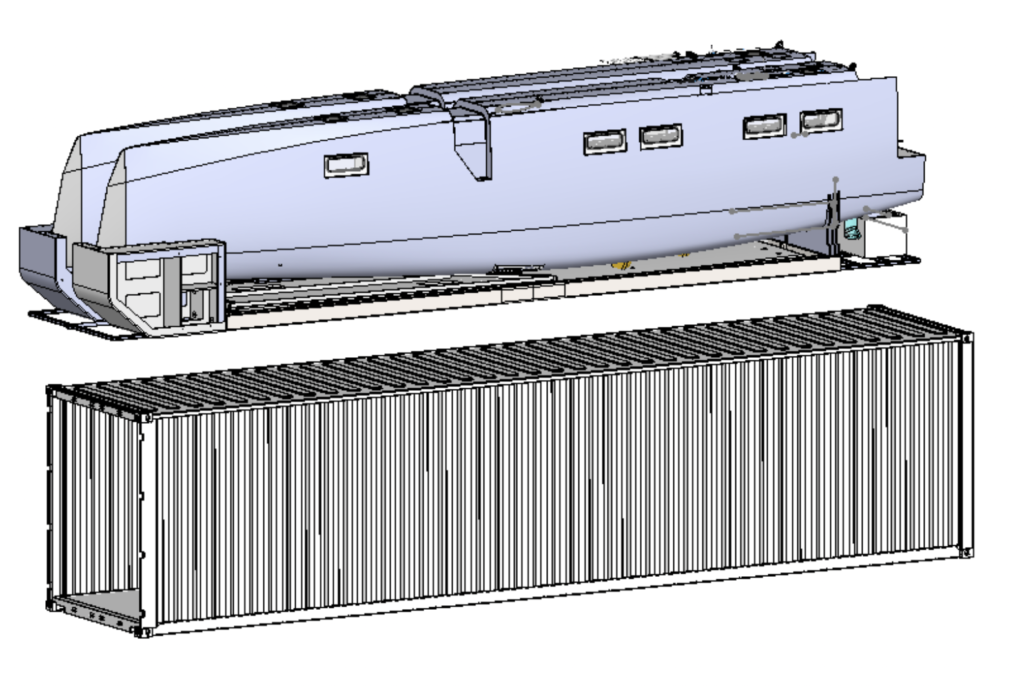
Vacuum Resin Infusion
Vacuum resin infusion is the process at the heart of our technology and is used for all parts.
The vacuum resin process removes all of the air between the fibres of a part prior to the introduction of the resin.
After the process, our parts are meticulously sanded with variable grit — allowing for maximum paint adhesion on surfaces and smooth, stylish edges.
Core Materials
Core materials are introduced into the part to increase stiffness without increasing weight.
The core is a structural-grade foam with a high shear strength characteristic: if the part is of a complex shape, we cut the foam into sections, thermoforming it to the required shape.
We use five different sizes and densities of foam on the boat, optimized for local strength requirements.
We purchase carbon fiber by the roll and over 35 rolls are used in each boat. We have engineered the laminate schedule to be most efficient in the various areas of the boat maximising strength and reducing weight.
Each meant to be the most efficient for their respective areas. The fabrics are stitched, instead of weaved.
Stitched fabrics do not need to bend over or under other fibre and lay flat, making a stronger part.
At Open Waters, it is our mission to make catamaran cruising more exciting and environmentally sustainable. We’ve set out to create a performance cruising catamaran that will be a joy to sail and that will raise the bar in environmental sustainability.
We have developed a unique design and manufacturing process, selected high performance materials that enable us to build a boat that uses less materials and is 50% lighter. As a result it is a lot faster and as a result it is able to generate and store the energy needed to propel it electrically for hours and provide enough energy for on board equipment.
We use high performance carbon fibre and a vacuum infusion process to maximize strength and reduce the use of resin and eliminate resin vapour emissions. We use 100% recycled PET foam core wherever possible and we see the opportunity for incremental use of bio-based epoxy and natural fibres in our future.
As we continue to develop our sustainability roadmap for our boats we will perform a full lifecycle analysis to identify other opportunities to minimize our carbon footprint.
The unique processes and skills we have developed can be applied and licensed to other marine and recreational vehicles businesses.
Simon Angus
Simon Angus P.Eng is a professional mechanical engineer with a background in project management and a passion for sailing.
He spent his university summers travelling around Europe searching for the best combination of wind and waves in addition to teaching both sailing and windsurfing.
After moving to Canada in 2004, Simon bought a Catalina 27 in Kitimat BC and enjoyed sailing in the Douglas channel with his young family. A career move to Alberta paused his sailing career until he found the joys of chartering sailboats in the Caribbean.
After a 20 year career in industrial engineering and project management he decided to make a change and combined his passion and profession to launch Open Waters Design and Manufacturing in 2016.
He designed and manufactured an 18ft canoe and developed a plug and mold and his proprietary vacuum resin infusion process. After the successful build of the canoe, Simon built a high performance 18ft A class foiling sailing catamaran out of a Carbon fibre and refined the mold construction and vacuum resin infusion process.
After researching the various build steps, Simon started with CNC shaping of a plug, hand finishing and building the hull molds. He also built the mast, Z foils and the Tee foil rudders. After successful trials in Vancouver BC, Simon then set out on his next ambitious project, to design and build the boat he had dreamt about for years.
A boat that could be shipped anywhere in the world, sail on with his family and returned to Vancouver for summer cruising and would be electrically sustainable.
Simon was introduced to Hal Whitacre in 2019 which started a design relationship that has resulted in the creation of the Open Waters ESC40.

Hal Whitacre
Hal Whitacre, owner of Whitacre yacht design since 1984 and is responsible for some of the fastest and most luxurious boats ever built.
Hal is Open Waters Chief Naval Architect and has worked closely with Simon over the past 2 years to produce the detailed designs that make up the Open Waters ESC 40.
Hal has a distinguished career in Naval Architecture graduating from the University of Michigan with a degree in Naval architecture and Marine Engineering.
Throughout his career he has pushed the boundaries of naval architecture notably designing the Open Class 60 “Imagine”; breaking ground with the largest rig ever put on an Open 60.
Hal also owns and operates Bruce Roberts USA and in that capacity, he has designed over 100 steel and aluminium boat kits in addition to many fiberglass and wood sail and power boats. Most recently, Hal was the chief Naval Architect for Gunboat Catamarans when they were built in the USA.
Since their move to Europe, Hal has completed 2 gunboat 55’s along with a conversation of a gunboat 55 to a powercat ferry which has recently conducted successful sea trials.
Hal and his wife Tammy split their time between Annapolis, Md and Sister Bay, Wi. Hal continues to race Lasers during the winter and windsurfs/foilsurfs as much as possible.
We’re hiring!
Join us on our mission to make catamaran cruising more exciting and environmentally sustainable.
Marine Experience Marketeer
You are well versed and have experience in nearly everything digital marketing. You’ve either grown up boating, lived the life of a cruiser, traveler, racer or practice an other lifestyle action sport and know what makes people tick. You’re an avid content creator and storyteller and you can work your magic with the tools of the trade. Lights, camera, sounds, action.
Join us for a seamless blend of work and play as we test and trial the boat, document BC cruising experiences and host prospective customers from around the world. While a lot of time is spent on the boat you’ll also be responsible for the creation, editing and delivery of all digital content via influencers, communities, social and traditional media and marketing channels.
If this sounds like you, please email me at [email protected] tell me why you’d love to join us in BC this summer and include a few links to the amazing content you’ve created and shared. I look forward to our chat.

- CLASSIFIEDS
- NEWSLETTERS
- SUBMIT NEWS
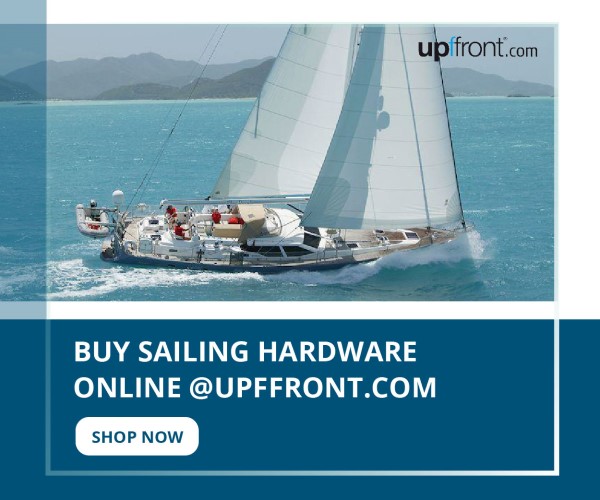
First all-electric HopYacht 30 Sailing Catamaran launched
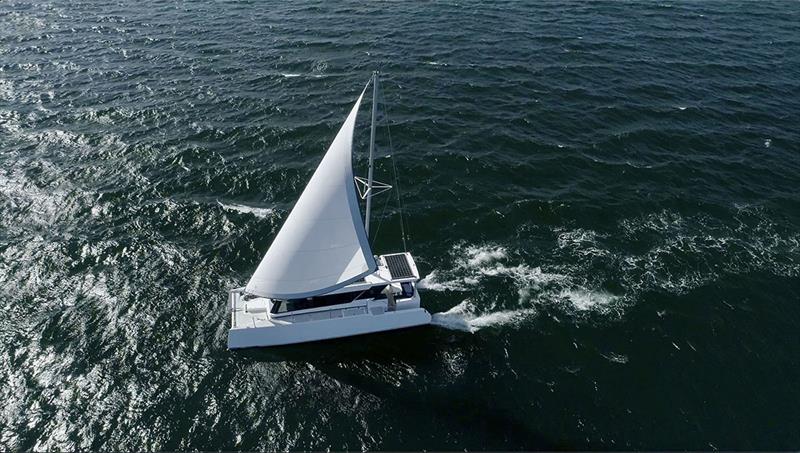
Related Articles
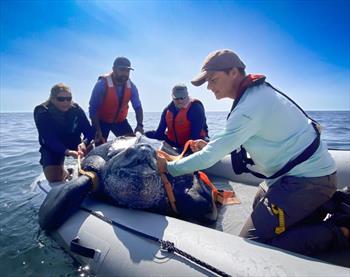
- Motorcycles
- Car of the Month
- Destinations
- Men’s Fashion
- Watch Collector
- Art & Collectibles
- Vacation Homes
- Celebrity Homes
- New Construction
- Home Design
- Electronics
- Fine Dining
- Baja Bay Club
- Costa Palmas
- Fairmont Doha
- Four Seasons Private Residences Dominican Republic at Tropicalia
- Reynolds Lake Oconee
- Scott Dunn Travel
- Wilson Audio
- 672 Wine Club
- Sports & Leisure
- Health & Wellness
- Best of the Best
- The Ultimate Gift Guide
Sunreef’s New All-Electric Catamaran Blends Solar and Wind Energy for Unlimited Range
The vessel features a special "solar skin" that produces clean power., rachel cormack.
Digital Editor
Rachel Cormack's Most Recent Stories
This new 131-foot all-aluminum superyacht lets you take a dip at tip and tail, this 92-foot yacht has a deck big enough for your chopper.
- This New 131-Foot Catamaran Comes With See-Through Hulls
- Share This Article

Sunreef Yachts has just started building what it’s claiming will be “the world’s most advanced sustainable luxury catamaran .”
The electric vessel, known as the Sunreef 80 Eco , blends the latest green technologies with the reliability of a day-sailer and the comfort of a superyacht. It was first unveiled last year as part of the Polish yard’s new Eco line that comprises a handful of vessels spanning from 40 to 100 feet.
Related Stories
- Tesla May Need to Worry About Xiaomi’s New 400-Mile EV
- Someone Finally Made a One-Person Scooter That Drives Like a Tank
Designed and engineered in-house, the 80-footer takes a holistic approach to eco cruising. It can harness and store renewable energy both above and below the waterline, which means it can sail silently sans emissions for days on end. In fact, the yard says it has infinite range.
Arguably the most innovative feature is the vessel’s solar skin. This photovoltaic system will see the world’s lightest solar cells integrated into the hull sides, superstructure, bimini and carbon mast. Covering a total surface of approximately 1,600 square feet, the skin will generate up to 34 kWp of clean energy that will be stored in custom-engineered lithium batteries. It also gives the multihull a cool, futuristic look.

The vessel’s solar skin can generate up to 34 kWp of clean energy. Sunreef Yachts
When it comes to propulsion, the cat takes a multipronged approach. It can either run on its two, energy-efficient 180kW electric engines or the wind. While under sail, the vessel employs an advanced hydro generation system to actually recover energy from the propeller rotation. Together, the two propellers can generate more than 15 kWh while sailing around 7 knots. This energy is then used to power the engines and onboard appliances.
“The Sunreef 80 Eco is all about responsible sailing and relying on renewable energy,” Sunreef’s founder and president, Francis Lapp, said in a statement . “We are now pairing the industry’s most innovative solar power system with hydro generation.”
The vessel also sports a high-tech water management system, highly efficient air conditioning, wind generators and non-toxic bottom paints. As for décor, it’s fully customizable and showcases a range of ethically sourced sustainable materials and furnishings.
Intended for long offshore adventures, the Sunreef 80 Eco is expected to hit the water this summer.
Check out more images of the vessel below:

Sunreef Yachts

Rachel Cormack is a digital editor at Robb Report. She cut her teeth writing for HuffPost, Concrete Playground, and several other online publications in Australia, before moving to New York at the…
Read More On:
- Electric Yacht
More Marine

Four Seasons Just Unveiled the First Itineraries for Its Luxury Cruise Ship

Lexus Just Unveiled a Speedy New 68-Foot Yacht

Culinary Masters 2024
MAY 17 - 19 Join us for extraordinary meals from the nation’s brightest culinary minds.
Give the Gift of Luxury
Latest Galleries in Marine

Unica 40 in Photos

8 Fascinating Facts About ‘Wayfinder,’ a 224-Foot Catamaran With a Helipad That Doubles as a Pickleball Court
More from our brands, art basel hong kong still draws fashion crowd amid uncertainty, washington post story on mulkey unlikely to spark defamation suit, remembering louis gossett jr. in ‘an officer and a gentleman’: his timeless acting elevated the movie drill sergeant into a mythic figure, christie’s secures sale of $30 m. de la cruz collection, the best exercise mats for working out, according to fitness experts.
- BOAT OF THE YEAR
- Newsletters
- Sailboat Reviews
- Boating Safety
- Sailing Totem
- Charter Resources
- Destinations
- Galley Recipes
- Living Aboard
- Sails and Rigging
- Maintenance
- Best Marine Electronics & Technology

The Promises and Pitfalls of an All-Electric Yacht
- By Tim Murphy
- Updated: November 8, 2021
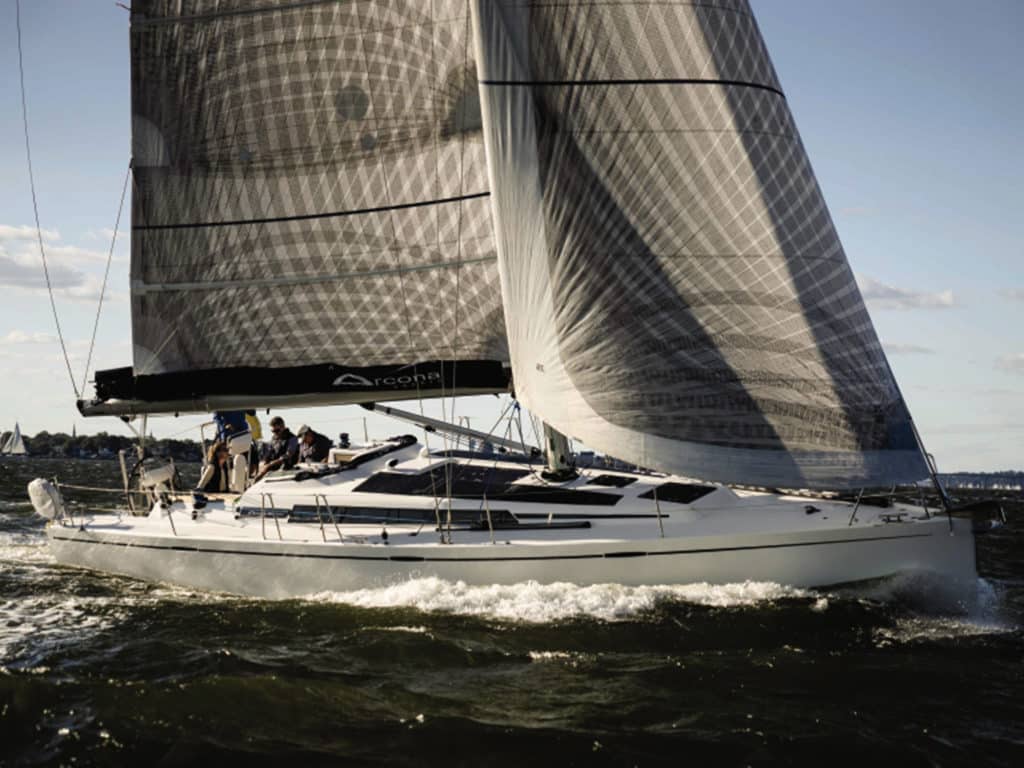
This past October, I saw one of the most interesting exhibits in more than 500 new cruising sailboats I’ve reviewed over two decades. It was the Arcona 435Z, built in Sweden and introduced by Graham Balch of Green Yachts in San Francisco. Balch describes his business as “a new brokerage dedicated to the electric revolution on the water,” and it was the “Z” in the boat’s name, which stands for “zero emissions,” that made this boat so interesting. This was the first electric propulsion system—not hybrid but all-electric —I’d ever seen on a cruising sailboat.
Electric propulsion isn’t new. Since 1879, electric motors have propelled boats; a fleet of some four-dozen electric launches transported visitors around the 1893 Colombian Exposition in Chicago. But cruising sailboats are not launches, and the open sea is not a protected canal. When we’re using cruising boats as they’re meant to be used, they seldom end their day plugged into a shore-power outlet. Cruising boats comprise many devices —stove, refrigerator, freezer, windlass, winches, autopilot, radar, lights—whose power typically comes from a tank of fossil fuel. And today’s cruising sailors are accustomed to using diesel auxiliary power to motor through lulls or punch into headwinds and seas.
Starting about 15 years ago, we saw a wave of diesel-electric and hybrid propulsion systems on production and custom cruising boats ( see “Perpetuated Motion,” CW , March 2005 ). Both of those systems ultimately start with an onboard internal-combustion engine. A diesel-electric propulsion system relies on a running genset to directly power the electric motor that turns the propeller. A hybrid system relies on batteries to power the electric motor, plus an internal-combustion genset to recharge the batteries. One of the promises of a hybrid system is the ability to regenerate electrical power. Regeneration means using boatspeed under sail to turn the propeller, whose spinning shaft sends electrons from the electric motor back through an electronic controller to recharge the batteries. In such a system, the boat’s propeller is both an electrical load (when running under power) and a charging source (when sailing in regeneration mode).
The Arcona 435Z was different from both of these systems: It incorporates no onboard fossil-fuel engine at all. Instead, it has a bank of lithium batteries, several solar panels, and a proprietary propulsion leg that looks like a saildrive. “This boat,” Balch said, “has the very first production unit in the world of Oceanvolt’s newest electric propulsion system, called the ServoProp.”
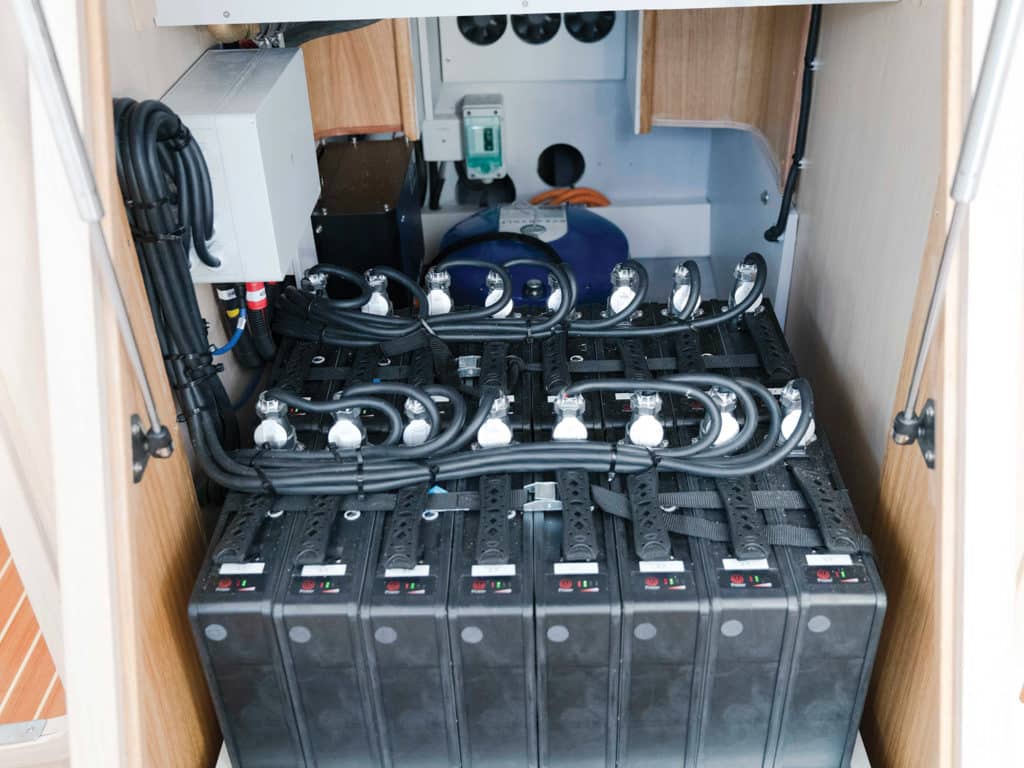
For our sea trial, Balch was joined by Derek Rupe, CEO of Oceanvolt USA. “If you can sail the boat and you have some solar, you can go anywhere in the world, and you can make all your power underway while you go,” Rupe said. When we spoke in October 2020, he touted three high-profile sailors who were using the Oceanvolt electric propulsion system: Alex Thomson, for his Hugo Boss Open 60 Vendée Globe program; Jimmy Cornell, for his Elcano 500 expedition; and Riley Whitelum and Elayna Carausu, who had been teasing their new boat for months on their popular Sailing La Vagabonde YouTube channel.
The efficiency of Oceanvolt’s ServoProp and the regeneration from it is the promised game-changer in each of these boats. The ServoProp is a leg with a feathering propeller that can be set for optimal pitch in three modes: forward, reverse and regeneration.
“You don’t need fuel,” Rupe said. “You don’t need to dock; you can go anywhere you want to go and always have the power for living and propulsion.”
That’s the promise. But are there also pitfalls?
Innovation and Risk
Marine electric propulsion is an emerging technology. Compared with the mature and settled technology of diesel engines and lead-acid batteries, electric-propulsion systems—with their electronic controllers and lithium batteries—are in a stage of development best described as adolescent. Every sailor has his or her own tolerance for technical innovation. For the promise of fewer seconds per mile, grand-prix-racing sailors willingly trade a high risk of expensive damage to the sails, rig or the boat’s structure itself; cruising sailors, by contrast, tend to favor yearslong reliability in their equipment as they seek miles per day.
Folks who identify as early adopters take special joy in the first-wave discoveries of a new technology; if they’re clear-eyed about supporting an ongoing experiment, they see themselves as partners with the developers, accepting failures as opportunities for learning. Sailors motivated primarily by changing the trajectory of climate change might be especially willing to modify their behavior to limit their own output of greenhouse gases. Investing in any emerging technology asks you to start with a clear assessment of your own risk tolerance. We’ll return to this theme with one or two real-life examples.
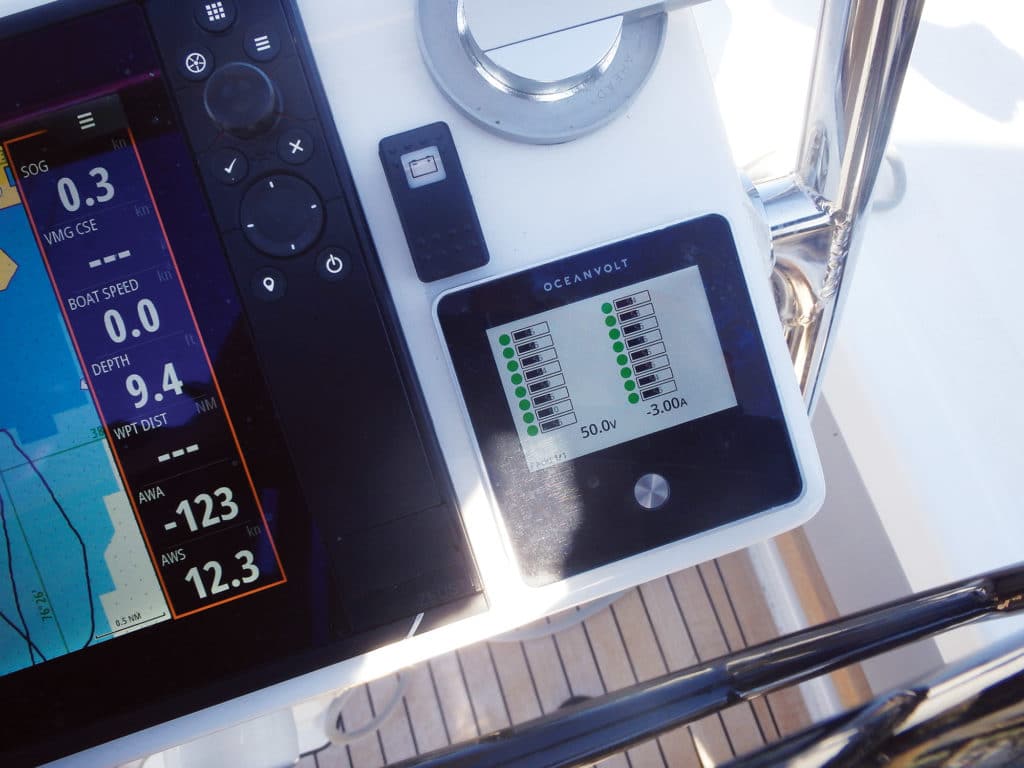
The American Boat and Yacht Council, founded in 1954, sets recommended standards for systems installed on recreational boats. For decades, ABYC has published standards related to installations of diesel and gasoline engines, as well as electrical systems based around lead-acid batteries. By contrast, it was only three years ago that ABYC came out with its first electric-propulsion standard (revised July 2021). And only last year it published its first technical-information report on lithium batteries (a technical-information report is an early step toward a future standard). The takeaway is that if you need help servicing your diesel engine or electrical system built around lead-acid batteries, you can pull into any reasonable-size port and find competent technicians to help you. With electric propulsion and lithium batteries, that pool of skilled talent is significantly scarcer.
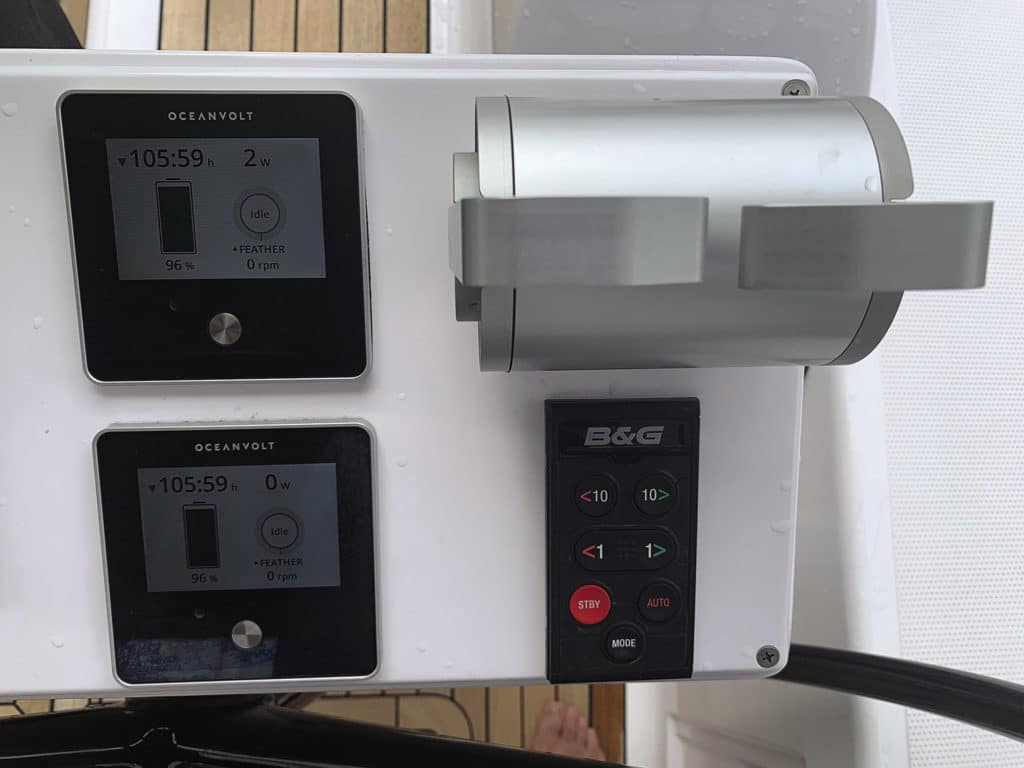
To say that a technology is mature simply means that we’ve learned to live with it, warts and all, but that it holds few remaining surprises. Certainly, diesel-propulsion and lead-acid-battery technologies each leave plenty of room for improvement. When a charge of fuel ignites in the combustion chamber of a diesel engine, some three-quarters of the energy is lost in heat and the mechanical inefficiencies of converting reciprocating motion to rotation. Lead-acid batteries become damaged if we routinely discharge more than half of their capacity. During charging, they’re slow to take the electrons we could deliver.
Lithium batteries are comparatively full of promise. Their power density is far greater than that of lead-acid batteries, meaning they’re much lighter for a given capacity. They’re capable of being deeply discharged, which means you can use far more of the bank’s capacity, not merely the first half. And they accept a charge much more quickly; compare that to several hours a day running an engine to keep the beers iced down.
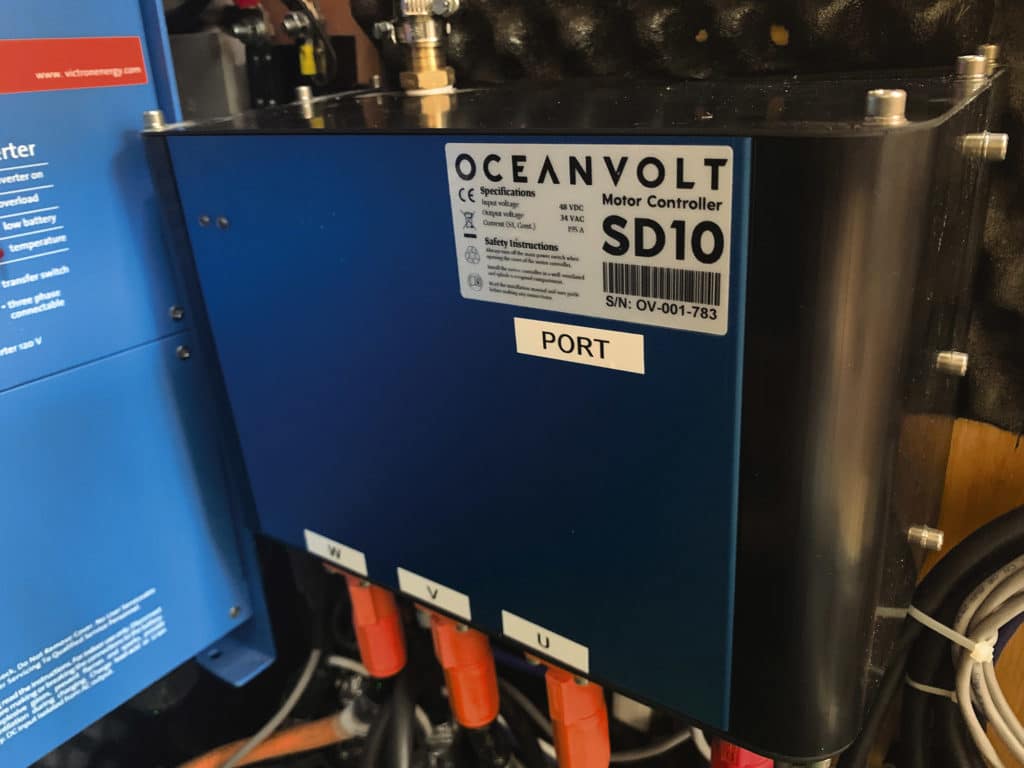
But the pitfalls? Let’s start with ABYC TE-13, Lithium Ion Batteries. Some of its language is bracing. “Lithium ion batteries are unlike lead-acid batteries in two important respects,” the report says. “1) The electrolyte within most lithium ion batteries is flammable. 2) Under certain fault conditions, lithium ion batteries can enter a condition known as thermal runaway, which results in rapid internal heating. Once initiated, it is a self-perpetuating and exothermic reaction that can be difficult to halt.”
Thermal runaway? Difficult to halt? Self-perpetuating?
“Typically, the best approach is to remove heat as fast as possible, which is most effectively done by flooding the battery with water,” TE-13 continues, “although this may have serious consequences for the boat’s electrical systems, machinery, buoyancy, etc.”
If you were following the news in January 2013, you might remember the story of Japan Airlines Flight 008. Shortly after landing at Boston’s Logan Airport, a mechanic opened the aft electronic equipment bay of the Boeing 787-8 to find smoke and flames billowing from the auxiliary-power unit. The fire extinguisher he used didn’t put out the flames. Eventually Boston firefighters put out the fire with Halotron, but when removing the still-hissing batteries from the plane, one of the firefighters was burned through his professional protective gear.
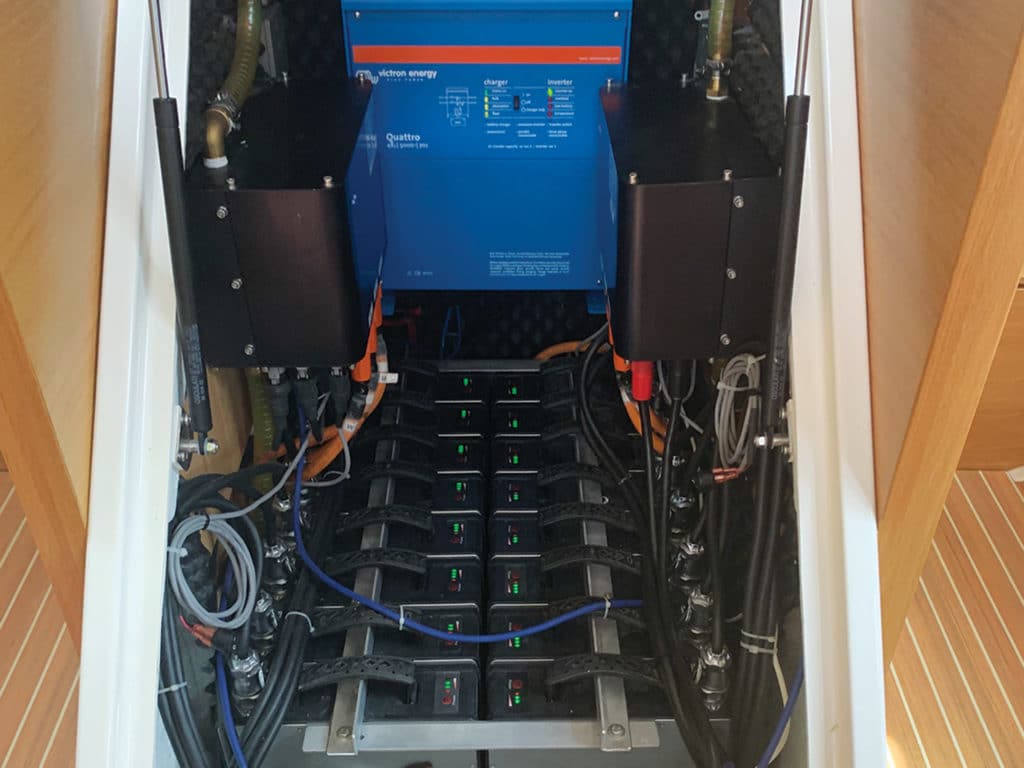
Samsung Galaxy cellphones, MacBook Pro laptops, powered skateboards—in the past decade, these and other devices have been recalled after their lithium batteries burned up. In that period, several high-end custom boats were declared a total loss following failures from lithium batteries. In March 2021, a 78-foot Norwegian hybrid-powered tour boat, built in 2019 with a 790 kW capacity battery bank, experienced thermal runaway that kept firefighters on watch for several days after the crew safely abandoned the ship.
Yes, experts are learning a lot about how to mitigate the risks around lithium batteries. But we’re still on the learning curve.
ABYC’s TE-13 “System Design” section starts, “All lithium-ion battery systems should have a battery management system (BMS) installed to prevent damage to the battery and provide for battery shutoff if potentially dangerous conditions exist.” It defines a bank’s “safe operating envelope” according to such parameters as high- and low-voltage limits, charging and discharging temperature limits, and charging and discharging current limits.
Graham Balch takes these safety recommendations a step further: “To our knowledge, the BMS has to monitor at the cell level. With most batteries, the BMS monitors at the module level.” The difference? “Let’s say you have 24 cells inside the battery module, and three of them stop working. Well, the other 21 have to work harder to compensate for those three. And that’s where thermal events occur.”
Balch followed the story of the Norwegian tour boat this past spring. He believes that the battery installation in that case didn’t meet waterproofing standards: “The hypothesis is that due to water intrusion, there was reverse polarity in one or more of the cells, which is worse than cells simply not working. It means that they’re actively working against the other cells. But if the BMS is monitoring only at the module level, you wouldn’t know it.”
On the Green Yachts website, Graham lists five battery manufacturers whose BMS regimes monitor at the cell level. “If I were sailing on an electric boat, whether it be commercial or recreational, I would feel comfortable with having batteries from these five companies and no other,” he said.
The broader takeaway for today’s sailors is that lithium batteries bring their own sets of problems and solutions, which are different from those of conventional propulsion and power-supply technologies. A reasonably skilled sailor could be expected to change fuel filters or bleed a diesel engine if it shuts down in rough conditions. With lithium-ion batteries aboard, an operator needs to understand the causes and remedies of thermal runaway, and be ready to respond if the BMS shuts down the boat’s power.
Real-World Electric Cruising Boats
When we met Oceanvolt’s Derek Rupe a year ago, he and his wife had taken their all-electric boat to the Bahamas and back the previous season. Before that, he’d been installing electric-propulsion packages for six years on new Alerion 41s and other refit projects. “My real passion is on the technical side of things—installations, really getting that right. That’s half the picture. The technology is there, but it needs to be installed correctly.”
When talking to Rupe, I immediately encountered my first learning curve. I posed questions about the Oceanvolt system in amps and amp-hours; he responded in watts and kilowatt-hours. This was yet another example of the different mindset sailors of electric boats need to hold. Why? Because most cruising boats have just one or two electrical systems: DC and AC. The AC system might operate at 110 or 220 volts; the DC side might operate at 12 or 24 volts. On your own boat, that voltage is a given. From there we tend to think in terms of amps needed to power a load, and amp-hours of capacity in our battery banks. Going back to basics, the power formula tells us that power (watts) equals electrical potential (volts) times current (amps). If your boat’s electrical system is 12 volts and you know that your windlass is rated at 400 watts, it follows that the windlass is rated to draw 33 amps.
But an all-electric boat might comprise several systems at different voltages. A single battery bank might supply cabin lights at 12 volts DC; winches and windlasses at 24 volts DC; the propulsion motor at 48 volts DC; and an induction stove, microwave and television at 110 volts AC. A DC-to-DC power converter steps the voltage up or down, and an inverter changes DC to AC. Instead of translating through all those systems, the Oceanvolt monitor (and Derek Rupe) simply reports in watts coming in or going out of the bank.
“We keep all our thoughts in watts,” Rupe said. “Watts count in the AC induction. They count in the DC-to-DC converter. They count the solar in. They count the hydrogeneration in. And the power-management systems tracks it that way for shore-power in.
“On a boat like this, maybe I have 500 watts coming in the solar panels,” he continued. “So then I can think: ‘Well, my fridge is using 90 watts. My boat has an electric stove. When I cook a big meal, I can see that for every hour we cook, we lose about 10 to 12 minutes of our cruising range.’”
During his Bahamas cruising season, Rupe observed that on days that they were sailing, the combination of solar panels and hydroregeneration supplied all the power he and his wife needed. “When we weren’t sailing,” he said, “we found that we were losing 8 percent each day, in the difference from what the sun gave us to what we were using for the fridge, lights, charging our laptops, and all that stuff.”
Rupe’s solution? “Twice in Eleuthera and once outside Major’s, we went out and sailed laps for a couple of hours because the batteries were below 30 percent of capacity. It was good sailing, and the wind was coming over the shore, so we didn’t have any sea state. We did a couple of hot laps on nice beam reaches, and generated about 700 watts an hour.”
Of the three sailors Rupe touted in October 2020—Alex Thomson, Jimmy Cornell and the Sailing La Vagabonde couple—only Cornell can report back on his all-electric experiences with Oceanvolt. Alex Thomson ended his circumnavigation abruptly last November, just 20 days after the Vendée Globe start, when Hugo Boss collided with an object in the South Atlantic. And at press time in early fall 2021, Riley and Elayna had just recently announced the build of their new Rapido trimaran; keep an eye on their YouTube channel for more about their experiences with the Oceanvolt propulsion system.
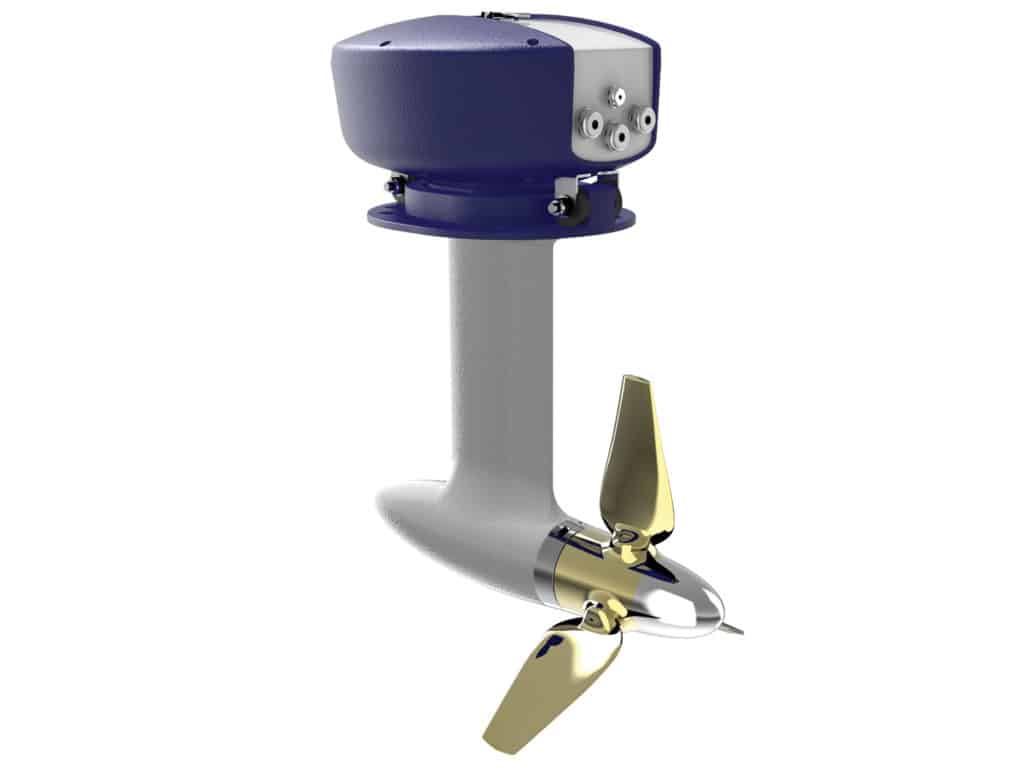
As for Cornell—circumnavigator, World Cruising Routes author, creator of the transoceanic rally, and veteran of some 200,000 ocean miles—he suspended his planned Elcano 500 round-the-world expedition solely because of the Oceanvolt system in his new Outremer catamaran. His Aventura Zero Logs on the Cornell Sailing website, particularly the Electric Shock article posted on December 2, 2020, are essential reading for any sailor interested in sailing an electric boat. “Sailing around the world on an electric boat with zero emissions along the route of the first circumnavigation was such a tempting opportunity to do something meaningful and in tune with our concern for protecting the environment that my family agreed I should do it,” Cornell wrote. “What this passage has shown was that in spite of all our efforts to save energy, we were unable to regenerate sufficient electricity to cover consumption and top up the batteries.”
Cornell’s experience in that article is raw, and his tone in that moment bitterly disappointed. We recommend it as essential reading—not as a final rejection of the electric-boat concept or of Oceanvolt’s system, or even as an endorsement of Cornell’s own decision that the system didn’t work. I suspect that I may have arrived at the same conclusion. Yet given the same boat in the same conditions, one imagines that a new breed of sailor—a Graham Balch or a Derek Rupe—may have responded differently to the constraints imposed by an all-electric boat, as nearly every cruising sailor today habitually responds to the inconvenient constraints of diesel engines and lead-acid batteries.
“If you bring electric winches, electric heads and an induction stove, and then sail into a high-pressure system, you’ll set yourself up for failure,” Balch said. “You have to balance your power inputs and your power outputs.
“Sailing an electric boat is a return to the tradition of sailing that the crutch of a diesel engine has gotten us away from,” he added. “Magellan’s fleet got all the way around the world, and they didn’t have a diesel engine.”
Tim Murphy is a Cruising World editor-at-large and longtime Boat of the Year judge.
- More: Green Wakes , Hands-On Sailor , navigation , print nov 2021 , sailboat review , Sailboat Reviews
- More Sailboats
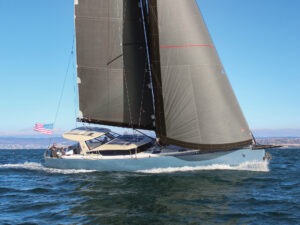
New to the Fleet: Pegasus Yachts 50

Balance 442 “Lasai” Set to Debut

Sailboat Review: Tartan 455

Meet the Bali 5.8
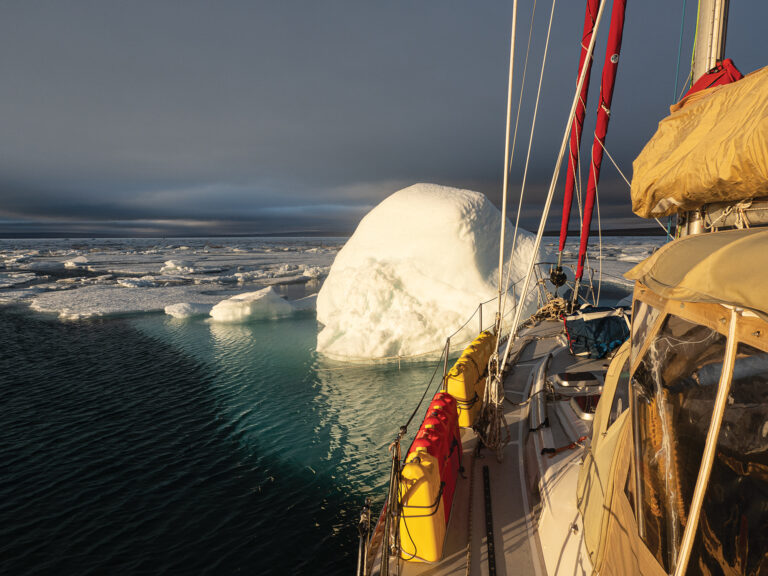
Cruising the Northwest Passage

A Legendary Sail

10 Best Sailing Movies of All Time
- Digital Edition
- Customer Service
- Privacy Policy
- Email Newsletters
- Cruising World
- Sailing World
- Salt Water Sportsman
- Sport Fishing
- Wakeboarding

With the Maverick 440 Hybrid you will enjoy
more silence & unlimited range.

Maverick 440 Hybrid
Key Benefits of Electric Engines
Quiet & Green
More Torque
Reduced maintenance
More power for house batteries
The set-up of the Maverick 440 Hybrid is for a circumnavigation ready yacht launched on the water in Cape Town, South Africa. This yacht already includes air conditioning, water maker, solar panels, generators and other items required for a circumnavigation.
The yacht comes equipped standard with a generous bank of lithium-iron-phosphate batteries to provide for your everyday needs and cruising pleasure while living aboard.
Mavericks are built in a semi-custom manner. The hulls & superstructure are production modeled and the owners specify their equipment, layout, and décor.
In this section, we focus on the benefits and set-up of the Electric powertrain. All the other good things you would find on The Maverick 400 & 440 are also available in this model.

The Maverick 440 Hybrid is an electric motor sailing catamaran. The electric motors are powered by lithium-ion phosphate batteries. The batteries are charged through a number of sources, namely; solar power, wind generators (optional), hydro-regeneration while sailing, shore power, and diesel generator(s).
The dual electric motors operating in pure electric mode from battery power have enough energy from the batteries to perform all anchoring & mooring maneuvers. This covers 90% of your use cases when operating on motors. For off-shore motor cruising & motor-sailing, there is a backup generator. The Maverick tracks so well through its clever hull design that it only requires one motor to run straight in most conditions off-shore providing double the range.
Our electric powertrain with multiple charging options and GenSet power back-up, with large diesel tanks, makes for the best range of any electric 44ft production cruising catamaran in the world.
Electric Motors are sail drives with feathering propellers provided by Oceanvolt.
Maverick Life Hybrid Layout

Saloon, galley & cockpit layout.
You can customize the layout of the galley, various cockpit layouts are available and decor is all your own choice.
Three Cabin , two heads owners yacht.
This is our most popular choice of the cabin layout.
You can customize the hull e.g. replacing the desk in the owner's hull with an additional sofa/sleeper couch or
converting the port forepeak bunk into a pantry, and/or
A workbench with the tool storage in the companionway.
The 3-Cabin Hybrid comes with
2 x 11 kW 48V DC GetSets.

4 Cabin layout
The four-cabin layout can accommodate 10 + 2 guests.
The forepeaks are for children. The saloon has a full queen size double bed that can be used as a day bed or for occasional guests or for watchkeeping.
The 4-Cabin Hybrid comes with a 15kW 48V DC GetSet.
Deck Layout
The deck layout shows the extensive opening hatches and good ventilation that is standard on a Maverick.

Testimonial
Genko Ganev
San Diego, California
"As a professional mechanical engineer, I am very particular about any construction process I am involved in, the quality of the materials and components used, all key ingredients for a high-quality product. Building a “live aboard” catamaran is twice more difficult than building a house in California. Our search for the right boat builder and the right live aboard custom-built catamaran took us over a year and I can confidently say: “We found the right one – Maverick Yachts in Cape Town, South Africa”. After two meetings with Rudi Pretorius at Maverick Yachts, we signed a contract, I quit my day job and relocated to Cape Town for six months while our catamaran was built. True custom-built catamaran, well thought out and build strong. As people say – “They don’t build them like that anymore”. We are extremely happy with our choice and the entire experience was better than expected."

Specification
Key Specs
•Length overall
•Length waterline
•Draft
•Mast height
•Mast height above waterline
•Displacement
•Fuel capacity
•Fresh water capacity
•Motors
•Main sail
•Genoa
•CE certified
13.3 m / 43.6 Ft
12.3 m / 40.3 Ft
7.45 m / 24.5 Ft
1m / 3.2 Ft
18.3 m / 60 Ft
20.1 m / 65.9 Ft
9930 kg / 21'892 lb
2 x 400 l / 2 x 106 US gal
2 x 500 l / 2 x 132 US gal
68 m² / 731.9 sq ft
43 m² / 462.8 sq ft
Sail More Often
The ability to sail more often in both light and strong conditions is the best solution for eco-cruising. The Maverick Hybrid catamarans get going under sail in just 4 knots of wind and can tack or gybe under sail power alone in just 6 knots of wind. Maverick catamarans are engineered with high-strength, low-weight materials.
The hulls and the interior modules are foam core using Gurit® Corecell™ foam for weight-saving and durability.
A lightweight catamaran means you sail more often and for longer with less reliance on engines.
The Maverick 400 & 440 catamarans have the shallowest draft of any fixed keel cruising catamaran in the world.
Optimal weight distribution & space-saving have been achieved with the installation of electric drive motors leading to improvements in boat handling, greater load-carrying capacity, and storage space.

Longest Range when Cruising
Maverick Yachts electric motors with the range extension system allow you to travel further on motors alone than any other 44ft electric cruising catamaran on the market today.
The total cruising range setting off with full battery bank and diesel backup for electric sail drive engines (i.e. no sail power) is calculated at over 1’000 nautical miles. (1’850 km). This range is under calm (neutral) sea conditions at 5 knots.
The cruising range extends further through solar charging.
Cruising range is unlimited when hydro-regeneration is combined in the right proportions with sailing.
Extend your Range
Together with solar power and wind generation you can extend your range on engines and reduce the need for diesel.
The Maverick 440 Hybrid is fitted standard with 42kW of lithium-iron-phosphate (LiFePO4) batteries, 650 watts of solar panels, and 800-liter (220 gallons) of long-range diesel tanks.
The configuration of the system is customizable to meet owners' requirements. An additional 650 watts of solar panels can be added to the bimini bringing the total of solar power to 1300 watts, consisting of 4 x 325-watt hard panels.
An optional 2 x 400watt wind generators can be added to the system to bring the total solar & wind power generation up to 2'100 watts. With the Maverick Hybrid's ability to recharge its batteries through solar power, wind generators, hydro-generators, and plug-in at the dock there is much less need for refilling your diesel tanks, saving you time and money.
Shore Power charging is available for both 120V and 230V.

Performance
Maverick Hybrid Oceanvolt electric motors instantly deliver the full torque of the engines from zero revs. With immediate torque throughout your rev range, the handling and performance of the engine power are sublime. This step-change in performance is achieved while enjoying the peace and quiet electric motors provide.
The responsiveness and power of the electric motors provide confidence during docking procedures and on the open ocean through excellent boat handling characteristics in all situations.
The Comfort of Silence
There is nothing better than the comfort of silence when sailing. With the electric motors, you get close to this level of silence when motoring. When at anchor you can enjoy the peace and quiet for hours on board as the large battery pack is powerful enough to run all the electrical house systems.
Due to the large power of the lithium-iron-phosphate (LiFePO4) battery pack, you have a greater ability to run all electrical systems on the yacht for longer periods. The battery pack is strong enough to run your air-conditioning, water maker, dishwasher, windlass, or autopilot without the need to switch on the generator. If you are conservative with your electrical consumption your batteries will recharge only through the use of solar panels, wind generator, and hydro generator. The backup generators are set to automatically come on when required and you can enjoy more silent intervals. The diesel generators are highly insulated to run smoothly & quietly. Overall there is less vibration & noise when the diesel generator is running than traditional diesel engines.

The Power of Lithium-Ion Batteries
The lithium-iron-phosphate (LiFePO4) battery pack is the source of the main power for all the boat systems and electric motors. This battery pack has a broader operating range than other traditional battery packs. You can use more of the discharge of the battery and you can charge the battery pack faster. This leads to far greater utilization of your batteries, providing more available amp hours that you can use compared with lead-acid / gel batteries. When you are producing a lot of electric power from solar, wind, and hydro generators the battery pack can absorb all this charge thereby greatly reducing the battery charge time.
The batteries have less weight, much higher amount of amp hours = higher Energy Density (Wh/kg), charge much faster, and can be discharged to deeper levels than traditional battery packs. This provides more power to all your home systems for longer. While sailing both electric motors can be set to hydro generation and this is a great way to charge your batteries while cruising with a minimum impact on boat speed. In certain conditions, while sailing at higher boat speeds, the electric motors in hydro generation mode have less resistance than folding props.
Beach your Maverick
The Maverick 440 Hybrid sailing catamaran is designed to dry out on its own bottom.

When setting off onto the open ocean it is good to know you can always get home safe. We use only the most advanced Lithium Iron Phosphate battery technology for safe operation at 48V that is UN38.3 and IEC62281 compliant. This provides a safe and conservative system with its own BMS – battery monitoring system that prevents excessive discharge or overcharging. We have 2 x powerful diesel generators that can provide sufficient power to operate electric motors while by-passing the battery bank. The battery bank can be charged from numerous other sources other than the diesel generators. By design, there are levels of back-up and redundancy built into the systems. This is coherent to the overall design philosophy of Mavericks that is designed to be independent & reliable with dual back-up built into most of the critical boat systems and the use of the highest quality components and materials.
Less Maintenance
Electric motors require far less maintenance than diesel engines. They have far fewer moving parts. The average diesel engine has 300+ moving parts including the transmission. The electric sail drive motors have less than seven moving parts and no transmission is required.
2 X electric motors replace the traditional diesel engines.
For charging & operating efficiencies electric motors and house systems share the same MAIN battery bank. For house loads, they draw from a 12v battery topped up by the MAIN battery bank.
Diesel generators run in their optimum rev range with low resistance leading to greater longevity and less maintenance.
The elective motors do not require winterization reducing annual engine maintenance costs.
Reduced maintenance costs and savings on diesel translate to an overall cost saving over the lifetime of the yacht. This saves time and money for the private owner. For the charter business, these savings translate to greater profitability, better return on investment, more productive time, and ultimately greater customer satisfaction.

Greener Eco -Cruising
The Maverick 440 Hybrid is greener in all aspects.
The system reduces the use of fossil fuel making it cheaper to operate the boat and better for the environment.
- 0 No item in your cart
- SUBSCRIPTION
- Classified Ads
- Technical Specifications
- Destinations
- Address book

- All the magazines
HopYacht 30 - An all-electric catamaran from South Africa

Article published on 16/11/2022
By Emmanuel van Deth
published in n°SP19 dec. / jan.
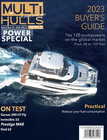
HopYacht has launched its first compact all-electric catamaran - the HopYacht 30, designed by Du Toit Yacht Design. The multihull is designed to be easy to sail with a single furling genoa and a mast that is logically stepped well aft to ensure good overall performance.
Create a notification for "Catamaran"
We will keep you posted on new articles on this subject.
The catamaran is environmentally friendly, being powered by two 6 kW E-Propulsion pods, equivalent to 9.9 HP engines, but obviously with no pollution or noise. Add to that an induction plate in the galley and an electric water heater, there is no fossil fuel on board. The accommodation is surprisingly comfortable for a unit of this size. The designers have limited the beam to 11’3” (3.44 m) in order to limit the price of berthing. The HopYacht can be disassembled and its two hulls each fit into a standard shipping container. The manufacturer is proposing an interesting model of shared ownership for 6 people (or 3 couples). The first HopYacht 30 will be delivered to a charter base in Greece for the start of the 2023 season. Builder: HopYacht Architect: Du Toit Yacht Design Length: 30’8” (9.35 m) Beam: 11’3” (3.44 m) Draft: 2’4” (0.7 m) Air draft: 39’4” (12 m) Sail area: 318 sq ft (29.5 m²) Price: $ 200,000 ex-tax
www.hopyacht.co.za
Tags :
- sailing catamaran ,
- Du Toit Yacht Design ,
- HopYacht ,
- HopYacht 30 ,
- Electric ,
- Electric catamaran
Did you like this article ?
Share this article
Most-read articles in the same category.
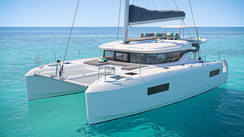
Lagoon 43 - To be discovered at Cannes!
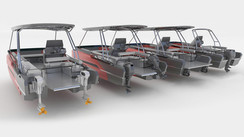
Korkyra 650 - A powercat in rotomolded polyethylene
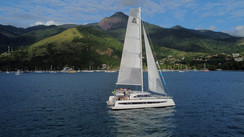
Sail Cat AG 49’ - Inverted bows made in Brazil
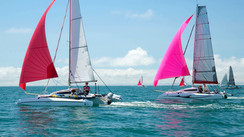
Astus Boats Club - Ask for the 2024 program!
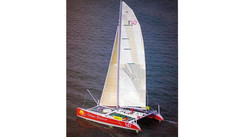
Message in a bottle - Where are you Optique Beaumont?
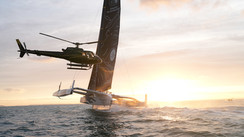
Arkea Ultim Challenge - Brest: Charles Caudrelier's coronation aboard his Maxi Edmond de Rothschild
What readers think.
Post a comment
No comments to show.
Useful links
- Download the boat test of the HopYacht 30 ,
- Charter a HopYacht 30 ,
- Purchase a HopYacht 30 secondhand ,
- Classified ads HopYacht 30 in secondhand multihulls ,
- Discover HopYacht and their HopYacht 30
Follow us on
Vous avez ajouté " " à vos favoris., vous avez supprimé " " de vos favoris., in order to add this article to your favorites, please sign in..
- NEW : Our Second-Hand catamarans
- New Windelo 50 Adventure
- New Windelo 50 Yachting
- New Windelo 50 Sport
- New Windelo 54 Adventure
- New Windelo 54 Yachting
- New Windelo 54 Sport
- Our Second-Hand catamarans
- The Windelo Innovations : performant, comfortable and eco-friendly catamarans
- Ocean Future : our ecological approach
- The Windelo Services
- Charter a Windelo catamaran
- The Windelo Shipyard
- Windelo Team
- Recruitment : Join the Windelo team

ELECTRIC HYBRID DRIVE SYSTEM For silent ecological sailing
Windelo catamarans travel silently even when under power, thanks to their electric hybrid drive system . Enjoy the sound of the waves and wind while not disturbing the wildlife as you set sail from your dream anchorage to a new destination. With our electric catamarans , no more exhaust fumes and vibrations – sailing is now a really pleasurable clean, environmentally-friendly experience .
The Windelo catamarans are fitted with two 20kW electric motors from Bellemarine . With an electric propulsion, there’s no need to warm up the electric motor. You have full power from the moment you switch it on.

Motor: A reliable high-performance electric hybrid drive system
Electric motor with a good cruising range.
- At 6 knots, the Windelo 50 has a range of nearly 3 hours and 45 minutes and roughly 22.7nm per day with an 1120Ah battery bank.
- At 7 knots, the Windelo 50 has a range of nearly 2 hours and 17 minutes and roughly 15.47nm per day with an 1120Ah battery bank.

When the energy consumed is not compensated by renewable energies , the 18kW backup 500L diesel generator(s) start(s) up to supply the electric motors and recharge the batteries . The generator is in the aft engine bays and communicates with the Boat Management System . It starts up automatically when the batteries are low and/or when the power required is greater than the power the batteries can supply. So, the full cruising range of our catamarans on the motor is 1100 nautical miles . The generator can also be started manually by the skipper in 2 different modes:
- Cruising range mode : for example, the skipper wishes to start his generator to increase his cruising range when there is no wind.
- Recharge mode : the skipper starts his generator, which automatically switches off when the batteries are fully charged.

SALES MANAGER
Windelo is a new conception brand of innovative catamarans. Ecology is at the heart of the company with the ambition to significantly reduce the environmental impact of our boats. A range of 44 to 60 foot catamarans offering sailors the opportunity to sail with pleasure and safety on eco-friendly boats.
In full development, we are hiring a sales manager:
JOB AND MISSIONS: Managed by the director of the company, and in connection with our various services and partners, you are a key player in the launch of this new brand.
Real project manager: 1. You co-build the Windelo sales and services office, 2. You recruit, train, and drive progressively a team of passionate experts, 3. You develop and innovate in the strategy of selling Windelo boats in Europe, 4. You recruit and lead a global network of sales partners, 5. You co-build and animate the company’s service strategy: port mapping places; insurance and financing; training; owner’s manual etc.
YOUR PROFIL 1. Passionate about sailing, you practice regularly, 2. Your sense of service and customer leads you to satisfy your customers every day, 3. You are enthusiastic and motivated to work in a start-up, 4. You have 2 to 5 years’ experience in the sale of boats, 5. Bilingual French – English, you also speak a third language: German, Italian, or Spanish.
EVOLUTIVE JOB Director of sales
AVAILABILITY / PLACE OF WORK 1st Quarter 2019 / Occitanie Region, Canet en Roussillon FRANCE
TYPE OF CONTRACT AND REMUNERATION Permanent contract / fixed to be defined according to experience + variable.
If you are a passionate of sailing and this challenge to participate in the development of a company in full creation arouses your enthusiasm, welcome to send your application by e-mail to: contact@windelo-catamaran.com
RESPONSABLE DES VENTES
Windelo consiste en la création d’une nouvelle marque de catamarans innovants. L’écologie est au coeur de l’entreprise avec pour ambition de réduire fortement l’impact environnemental de nos bateaux. Une gamme de catamarans de 44 à 60 pieds offrant aux marins la possibilité de naviguer avec plaisir et sécurité sur des bateaux éco responsables.
En plein développement, nous recrutons un(e) responsable des ventes
POSTE ET MISSIONS
Managé(e) par le directeur de l’entreprise, et en lien avec nos différents services et partenaires, vous êtes un acteur clefs du lancement de cette nouvelle marque. Véritable chef de projet :
1. Vous co-construisez le bureau des ventes et des services de Windelo, 2. Vous recrutez, formez, et animez progressivement une équipe d’experts passionnés, 3. Vous développez et innovez dans la stratégie de vente des bateaux Windelo en Europe, 4. Vous recrutez et animez un réseau mondial de partenaires de vente, 5. Vous co-construisez et animez la stratégie de service de l’entreprise : mapping des places de port ; assurance et financement ; formation ; entretien ; manuel du propriétaire etc.
VOTRE PROFIL 1. Passionné(e) de nautisme, vous naviguez régulièrement, 2. Votre sens du service et du client vous anime pour satisfaire vos clients au quotidien, 3. Vous êtes enthousiaste et motivé(e) à l’idée de travailler en équipe dans une « start-up », 4. Vous disposez de 2 à 5 ans d’expérience dans la vente de bateaux de plaisance, 5. Bilingue français – anglais, vous maitrisez également une troisième langue : allemand, italien, ou espagnol.
POSTE EVOLUTIF Directeur des ventes
DISPONIBILITÉ / LIEU DE TRAVAIL 1ier Trimestre 2019 / Région Occitanie, Canet en Roussillon FRANCE
TYPE DE CONTRAT ET REMUNERATION CDI Cadre / Fixe à définir selon expérience + variable.
Si vous êtes un(e) passionné(e) de l’univers du nautisme et que ce challenge de participer au développement d’une entreprise en pleine création suscite votre enthousiasme, merci d’adresser votre candidature par e-mail à : contact@windelo-catamaran.com
As part of the creation of new types of catamaran made in Occitanie, an audacious choice of ecological innovation has been selected in partnership with the Materials Center of « Mines d’Alès » (C2MA – IMT MINES ALES) (Gard, France). It’s a question of combining ecological performance in terms of minimizing the environmental footprint and structural resistance, and this, in a global approach of circular economy on all parts of the boat. To do this, and in connection with the IMT MINES ALES, Windelo has relied on the use of secondary raw materials, competitive virgin petroleum-based materials, that fully comply with the specifications in terms of mechanical performance. This is a real first step to the development of a 2.0 fleet ships fully integrated into the challenges and ecological challenges of the 21st century.
Associated with an ecological approach of circular economy integrating a not insignificant part of competitive secondary raw materials from virgin materials, the architectural design and the resistance of materials on the new Windelo catamarans are mechanically tested in the Materials Center of « Mines d’Alès » (C2MA – IMT MINES ALES) (Gard, France) in connection with the architects and designers of the project. The design of the ship, and in particular the hulls and bows, go through a search for efficient structuring and arranging of materials composing it, combined with a mechanically optimized geometrical assembly. To this end, specific test developments, such as the study of distortion of the structure and of the panels constituating the hull of the ship, are studied by digital image correlation techniques coupled with standardized strength tests.
Founder of Catana
“The cruising program for this new boat raises the question of the antagonism between the search for performance under sail and the pleasure of navigation, and the development of pleasant living spaces. The originality of the answer is provided here in the arrangement of the cockpit bringing together the helm and maneuvers to the center of the boat and in the arrangement of living space that occupies the rear of the nacelle.
Just behind the mast the outer cockpit offers two helm stations protected from the wind and spray, a beautiful view of the sails and bows, and allows to have all the maneuvers on hand while limiting the needs to circulate on the bridge. Out of navigation, the cockpit can be more widely protected from the outside and open to the rear space.
Fully opened behind this cockpit, we have not developed two living spaces duplicating one inside the other but a single large space which is ajustable. We have focused our efforts on the geometry of the material and visual limits of this space and on the opening kinematics of the bays. Once opened, they “disappear” to transform the interior into an exterior. The generosity of these openings also allows to modulate the ventilation of this space by playing on a wide range of opening on its four sides
This work on the modularity and the disappearance of limits is found at the extreme rear of the nacelle, with an articulated platform to the davits transforming it into a floor when anchored, and in the rear cabins, whose wide turning porthole eliminates the angle between side plating and back side. The cabin space is therefore generous despite the relative narrowness of the hulls.
All these choices allow us to combine a contained hold of the nacelle, pledge control of the weight estimate, to a generous living space, with a central part given to navigation and maneuvering. The slenderness of the forward spikes, the significant free height under the platform, and the attention paid to the centering of the masses, complete the marine qualities expected for an offshore navigation program.
The other originality of the project brought by this new construction site is in the approach of “eco-design” on materials and construction. Strongly limiting the use of molds, the latter brings a greater margin of freedom in the variations and evolutions of the boats thus conceived. ”
Christophe Barreau et Frédéric Neuman
Architects and Naval Engineers
Who could know if it is the father or the son who is the most passionate? It doesn’t matter. The important thing is to write an innovative project within a family culture, for today and for generations to come. Hand over the guiding light, this is Olivier Kauffmann’s will. “At first I wanted to make my own boat, for me and my family; go on trip around the world living on a efficient and pleasant catamaran. I dreamed of a new quality of space. Today, the dream has matured, and I want to share it with the great family of sailors. »
Windelo is the desire to expose us to something new, innovative, powerful, bigger than oneself. To seek innovations on materials, techniques of industrialization and uses to impulse a new economic reality. “We want to be part of this transformation related to the respect of our environment, it is for us, essential to work in this respect of men and nature. Men are at the heart of the project with the desire to recruit and form a passionate team, surrounded by experts recognized as the best in their field.
And the innovation doesn’t stop here, because the constructive process makes it possible to envisage fast evolutions from one boat to another while remaining well priced. An ambitious and respectful project ; Welcome to the Windelo adventure.
Dans le cadre de la confection de nouveaux types de catamaran made in Occitanie, un choix audacieux d’innovation écologique a été retenu en partenariat avec le Centre des Matériaux des Mines d’Alès (C2MA – IMT MINES ALES) (Gard). Il s’agit à la fois d’allier performance écologique en termes de minimisation de l’empreinte environnementale et résistance des structures, et ce, dans une démarche globale d’économie circulaire sur l’ensemble des parties du bateau. Pour ce faire, et en lien avec l’IMT MINES ALES, Windelo a misé sur l’utilisation de matières premières secondaires, compétitives des matériaux pétrosourcés vierges, et parfaitement conformes au cahier des charges sur le plan des performances mécaniques. C’est un réel premier pas vers l’élaboration d’une flotte de navires 2.0 s’intégrant complètement dans les enjeux et défis écologiques du XXIème siècle.
Associées à une démarche écologique d’économie circulaire intégrant une part non négligeable de matières premières secondaires concurrentielles des matières vierges, l’architecture de conception et la résistance des matériaux des nouveaux catamarans de Windelo sont éprouvées par des tests mécaniques réalisés au Centre des Matériaux des Mines d’Alès (C2MA – IMT MINES ALES) (Gard) en lien avec les architectes et designers du projet. La conception du navire, et en particulier les bordées et étraves, passe par une recherche de structuration performante de l’agencement des matériaux le composant, combinée à une géométrie d’assemblage optimisée sur le plan mécanique. Pour ce faire, des développements d’essais spécifiques, comme l’étude de la déformation de la structure des panneaux constituant la coque du navire, sont étudiés par des techniques de corrélation d’image numériques couplés à des essais de résistance mécanique normalisés.
La rencontre avec Olivier et Gautier a été une agréable surprise pour moi, dès l’exposé de leur projet, j’ai vu réunis tous les ingrédients d’une réussite, l’expérience de gestion d’entreprises mais avec une modestie rassurante, le souci de former une équipe des meilleurs experts (sourire) et une réelle écoute de leurs avis. Au fil des rencontres, les discussions ont ravivé mes souvenirs de la création puis du développement de Catana. Les mêmes motivations, la même recherche de perfection, la même audace teintée de modestie que nous avions au départ du projet. Windelo est centrée sur le produit ; une ligne de catamarans performants construits avec les techniques les plus modernes. Je n’en avais pas conscience à l’époque mais je crois que le succès d’un bon bateau vient de cette passion pour la mer avec la volonté de marier confort sécurité et performance. Je retrouve ici cette passion, et aujourd’hui ce qui a fini de me conquérir c’est le souci de préservation de la nature, tant dans les matériaux choisis que dans les méthodes de production.
Le programme de grande croisière auquel se destine ce nouveau bateau pose la question de l’antagonisme entre d’une part la recherche de performances sous voiles et du plaisir de navigation, et d’autre part l’aménagement d’espaces de vie agréables et généreux. L’originalité de la réponse apportée ici réside dans la disposition du cockpit rassemblant poste de barre et manœuvres au centre du bateau et dans le traitement de l’espace de vie qui occupe l’arrière de la nacelle. Juste en arrière du mât le cockpit extérieur offre deux postes de barre protégés du vent et des embruns, une belle vue sur les voiles et sur les étraves, et permet d’avoir l’ensemble des manœuvres à portée de main tout en limitant les besoins de circuler sur le pont. Hors navigation, le cockpit peut être plus largement protégé de l’extérieur et s’ouvrir sur l’espace arrière. De plein pied en arrière de ce cockpit, nous n’avons pas aménagé deux espaces de vie dupliqués l’un à l’intérieur et l’autre à l’extérieur mais un seul grand espace dont le degré d’ouverture est très largement modulable. Nous avons porté notre effort sur la géométrie des limites matérielles et visuelles de cet espace et sur les cinématiques d’ouverture des baies. Une fois ouvertes elles « disparaissent » pour transformer l’intérieur en extérieur. La générosité des ouvrants permet également de moduler la ventilation de cet espace en jouant sur une large gamme d’ouverture sur ses quatre côtés Ce travail sur la modularité et sur la disparition des limites se retrouve à l’extrême arrière de la nacelle, avec une plateforme articulée aux bossoirs se transformant en plancher au mouillage, et dans les cabines arrières dont le large hublot tournant fait « sauter » l’angle entre bordé latéral et face arrière. L’espace de cabine est donc généreux malgré la relative étroitesse des coques. L’ensemble de ces choix nous permet de conjuguer une emprise contenue de la nacelle, gage de maîtrise du devis de poids, à un espace à vivre généreux, avec une place centrale accordée à la navigation et aux manœuvres. L’élancement des pointes avant, l’importante hauteur libre sous nacelle, et l’attention portée au centrage des masses, complètent les qualités marines attendues pour un programme de navigation hauturière. L’autre originalité du projet apportée par ce nouveau chantier se trouve dans l’approche d’« éco-conception » portant sur les matériaux et le mode constructif. Limitant fortement le recours aux moules ce dernier apporte une plus grande marge de liberté dans les déclinaisons et évolutions des bateaux ainsi conçus.
Qui sait lequel du père ou du fils est le plus passionné ? Peu importe. L’important ici est d’écrire un projet innovant au sein d’une culture familiale, pour aujourd’hui et les générations à venir. Passer le flambeau, le relais ; c’est la volonté d’Olivier Kauffmann. « Au début je voulais me faire mon propre bateau, pour ma famille et moi ; partir faire un tour du monde sur un catamaran performant et plaisant à vivre. Je rêvais à une qualité d’espace inédite. Aujourd’hui, l’envie a mûrit, et je tiens à le partager avec la grande famille des marins ».
Windelo c’est l’envie de s’exposer à quelque chose de nouveau, d’innovant, de performant, de plus grand que soi. Aller chercher des innovations sur des matériaux, des techniques d’industrialisation, des usages et impulser une nouvelle réalité économique. « Nous voulons faire partie de cette transformation liée au respect de notre environnement, c’est pour nous indispensable d’œuvrer dans ce respect des hommes et de la nature. Les hommes sont au cœur du projet avec la volonté de recruter et former une équipe de passionnés, entourés d’experts reconnus comme les meilleurs dans leur domaine ».
Et l’innovation ne s’arrête pas là, car le process constructif permet d’envisager des évolutions rapides d’un bateau à un autre tout en restant bien placé en prix. Projet ambitieux et respectueux, bienvenu(e) dans l’aventure Windelo.
- Yachting World
- Digital Edition

How hybrid sailing yachts finally became a feasible option
- May 17, 2019
They’ve been a long time coming, but marine hybrid propulsion systems are finally a working reality, as Sam Fortescue reports

The Bootswerft Heinrich-built 13m Yamila uses an Oceanvolt electric motor rather than a diesel engine. Photo: Peter Minder
Every sailor is familiar with the wet cough of the diesel engine, and the acrid smell of its exhaust. For some it’s the sign that an adventure is starting, for others it is the reassurance that all is well on board the boat. The traditional engine is perhaps your boat’s most important safety feature, but its days may be numbered.
The electric sailing revolution is coming – and though adoption in the marine sector is proving much slower than in the automotive world ashore, progress is being made.
The market is still relatively small. Clear market leader Torqeedo had sales of €25m last year, most of which was in ferries and compact outboards. It also offers a range of saildrive and pod drive motors for yachts displacing from 2 to 50 tonnes, or roughly 20-60ft LOA.
But sailors have been slow on the uptake, and for one good reason: if you’re planning to cross an ocean or take on tough conditions offshore, you rely on your engine to help you outrun danger or motor through the doldrums – sometimes for days at a time.

Oceanvolt AXC series is a modular shaft drive system (10kW to 40kW) that will fit in place of a tradition diesel engine
Even with the current crop of advanced lithium-ion boat batteries , the range of an electric system is measured in tens of miles, not hundreds. So a 35ft monohull with 10kWh of lithium battery (four units weighing 96kg in total) would have a range of just 24 nautical miles at 3.8 knots, or less than 16 nautical miles at full throttle.
Taking into account the incredible wastage of combustion engines, which dissipate more energy as heat and noise than they provide in propulsion, diesel is still ten times more energy dense than batteries.

Full-carbon luxury daysailer Yamila uses an Oceanvolt SD8 8kW electric saildrive system. Photo: Tobias Stoerkle
“When you look at bluewater cruisers, of course you will have a diesel,” says Torqeedo’s founder and CEO, Dr Christoph Ballin. “And it’s right that not many coastal sailors opt for pure electric.”
But that doesn’t mean that electric has no interest for cruising sailors – far from it. The more common route for ‘normal’ sailors will be to combine diesel and electric in a hybrid sailing system.
Under this model, the engine is replaced by an electric motor, hooked up to a bank of lithium batteries. This can be charged via hydrogeneration – when the speed under sail turns the propeller and puts charge back into the batteries – and solar or wind. But when extended periods under power are required a standalone DC generator, which can be installed anywhere on board, supplies the electricity.
This is the set-up recommended by Finland’s Oceanvolt, which has focused on the cruising sailing market with a range of shaft and sail drive motors from 3.7kW to 15kW (roughly 10hp to 45hp in diesel engine terms).
“In the case of the round-the-world cruiser, we recommend a hybrid system with a backup genset to support continuous drive when/if needed,” says Oceanvolt CEO Markus Mustelin. “A regenerating prop, which spins while sailing and recharges the batteries (sacrificing 0.2-0.4 of a knot, depending on the boat and conditions) makes it possible to be almost independent of the genset and use it only for backup.”

Spirit Yachts starts construction on Spirit 111 – one of the largest single-masted wooden yachts ever
Ipswich-based modern classic builders Spirit Yachts has started construction on its largest project to date, a 34m sloop, Spirit 111.…

Electric propulsion experts Torqeedo wins top award for innovative electric drive
The electric propulsion pioneer Torqeedo won the largest marine equipment prize of the year today (15 November) – for the…
This system has the advantage that the generator is only needed on longer passages, so the boat still manoeuvres silently in and out of ports and anchorages.
And a well-designed, correctly sized generator is much more efficient at turning diesel into electricity than an engine not originally designed for the job. Some sailors opt for an in-line hybrid system, like those offered by Hybrid-Marine, which bolts onto the existing diesel.
These are easier to retrofit, with many of the same characteristics as the full hybrid system, but there’s the disadvantage of still having an engine boxed away somewhere near the middle of the boat.

Electro magnetism
Until now, most business has been done through retrofitting existing yachts. But an increasing number of yacht builders are looking to include electric propulsion as original equipment. The world’s third largest boatbuilder, Hanse Yachts , is perhaps the most advanced – offering its entry-level Hanse 315 with an electric rudder-drive option.
The system takes up less space than the standard diesel, is much quieter and vibration- and emissions-free. But Hanse admits take up has been disappointing.
The technology has found more interest among lake sailors. Innovative young German brand Bente has been fitting Torqeedo motors to its successful 24ft model, originally designed for Germany’s ‘Green Lakes’.
Closer to home, dinghy specialist RS Sailing has decided to fit a retractable electric drive to its new RS21 keelboat. Already christened the ‘invisible gennaker’, the system is based on Torqeedo’s Travel 1003 outboard motor.
Bigger race boats have also been attracted by the lure of low-weight propulsion. Just look at Malizia , an IMOCA 60 being prepared for the 2020 Vendée Globe with a lightweight Torqeedo system.
“Emissions-free round the world under race conditions, while simultaneously producing your own energy, is a thoroughly inspirational concept,” said Malizia skipper Boris Herrmann.
Electric has also been successful at the luxury end of the market, where lithium-ion batteries account for a smaller share of the boat’s overall cost. A 50ft Privilege 5 catamaran and a carbon fibre Gunboat 60 have both been retrofitted with Torqeedo kit, while Oceanvolt appears on a Swan 57 and an all-carbon Agile 42.

Overview of the Torqeedo Deep Blue propulsion system installed in the Gunboat Moonwave
The Gunboat Moonwave has two 25kW Deep Blue saildrives both capable of regenerating under sail. There is still a generator on board to extend battery range offshore, but “they no longer use the generator – it’s just for emergency,” says Torqeedo’s Ballin.
Spirit Yachts is also designing electric propulsion into its Spirit 111 flagship, due for launch this summer. With four big 40kW lithium batteries aboard and a 100kW motor, the yacht will be able to operate silently for hours, although it also has 100kW of diesel generator capacity.
“The real focus is not the propulsion,” explains Spirit director Nigel Stuart, “but that everything works in harmony, from galley equipment and hot water to heating, air conditioning, hydraulics etc.” The British yard is also building a 65-footer using Oceanvolt hybrid technology and a new 44-footer that is pure electric.
With racing on one hand and high-end cruisers on the other, there is something of a gap in the middle. By Torqeedo’s own admission, the cruising sailor hasn’t been a big focus of the electric revolution, but all that is about to change. “We started a bit late with sailing,” Ballin admits, “but in the next five to eight years it will be addressed big time.”
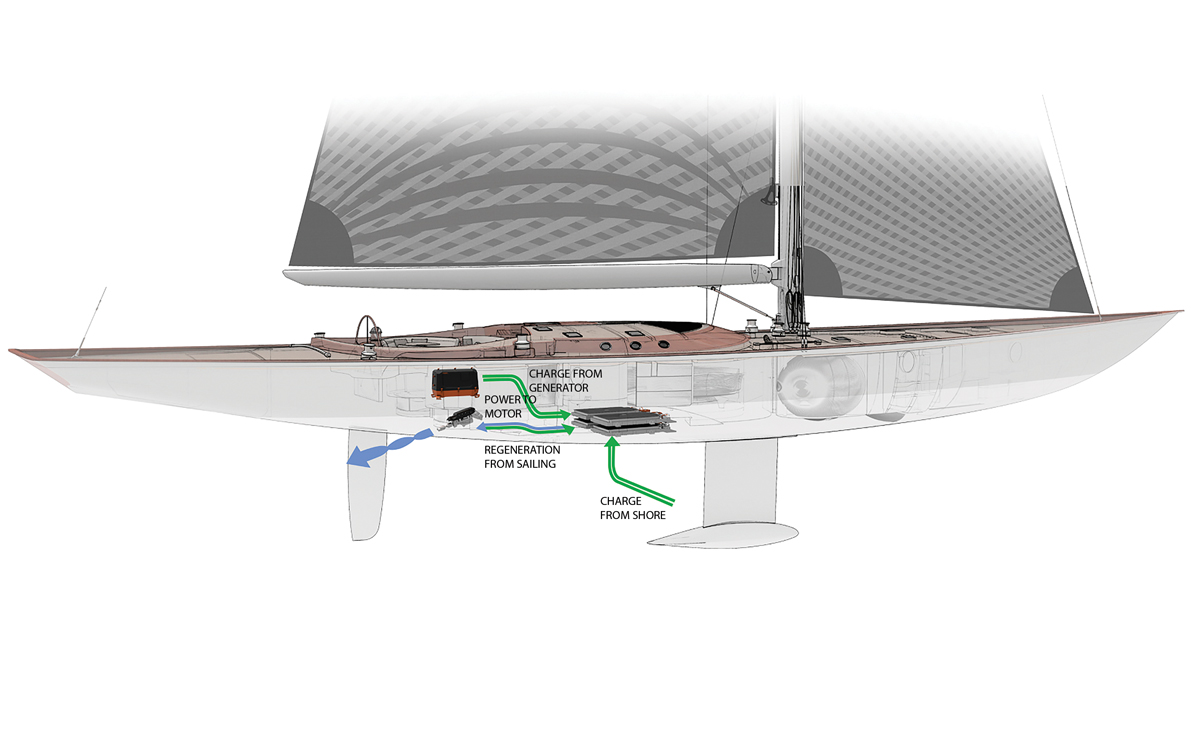
Fully integrated electric drive system will power the new 111ft Spirit Yachts flagship
What does that really mean? Well, in the first instance, it means system integration. If that doesn’t sound revolutionary, then imagine a set-up on board where solar panels, hydrogenerators, batteries, generators and motors all worked seamlessly together to keep the yacht supplied with ample power around the clock. “That’s what people are willing to pay for: plenty of energy with heating or air-con through the night,” says Ballin.
The future of hybrid sailing
In the near future, Torqeedo is planning a new range-extending DC generator specifically for hybrid sailing boats. Its existing unit is built by WhisperPower and provides 25kW, which is too much power for boats using the pod drive system.
The genset will be designed to operate at optimum revolutions, while clever DC to DC conversion decouples the battery voltage from the charging voltage, for much greater efficiency.
With boats, just as with cars, the breakthrough that will make all the difference is around battery capacity. Until range under electric power can match that of diesel, there will be many sceptics. And that isn’t likely to happen for a decade or more, according to Ballin.
“Theoretically, they’ve tested batteries in labs that are ten times more efficient than lithium,” he explains. “And if that comes through, then gasoline is done. But we are trying to combine long-term vision with short-term mindset.”
In the meantime, the prevalent technology is based on lithium-manganese-cobalt, and a process of steady development is making this 5-8% better each year. For example, BMW has just announced its next generation i3 battery, used by Torqeedo’s Deep Blue system, will be able to hold 40kWh of power – an increase of 33% for the same size, weight and nearly the same cost.

Torqeedo Cruise 2.0 FP Pod Drive is suitable for small yachts up to 4 tonnes – a folding prop can also be fitted
The other area of development is around the propeller. Most cruising systems use a folding or feathering prop designed for diesel engines. But Torqeedo’s own research shows that the consistently high torque of an electric motor is best utilised by props with variable pitch.
And yet it is Oceanvolt that has addressed this issue specifically for electric motors with its Servo Prop system, which it claims to be 30% more efficient ahead, 100% better astern and 300% more efficient in regeneration mode.
Oceanvolt says that this prop can pump around 500W into the batteries at just 5 knots – the average pace of a 30ft monohull. At 6 knots that rises to around 800W, and at a very manageable 7 knots for a larger ocean cruiser you get 1.2kW.
“A new technology can rarely compete in price with an established one in its initial growth phase,” says Mustelin. “However, we have passed this and today electric systems are offered at a quite competitive price. When you add to that the fact the electric system is almost service free, the total cost of ownership is turning in favour of electric.”
So, you may not hear them approach, but expect to see more and more electric-powered boats on the water as the revolution continues.
A question of torque
A key part of the viability of electric propulsion rests on the notion that a smaller motor can achieve the same work as a bigger diesel. There are two elements to this. First, a diesel engine is not an efficient converter of chemical energy into thrust, creating a lot of heat and noise in the process. Second, the torque characteristics of electric are much better than diesel.
Mustelin says that Oceanvolt’s 10kW motor “easily outperforms” a 30hp diesel. “Typically, maximum boat speed will be somewhat lower (0.5kt-1.0kt) than with a comparable diesel engine, but at the same time the boat will maintain the speed better in heavy seas and headwind due to higher torque. Manoeuvrability is much better in confined marina spaces.”
That’s because combustion engines only reach peak power (and maximum torque) over a small range of speeds. Torque is a measure of turning power – at the propeller in the case of a boat.
A diesel engine develops optimum torque between 1,800-2,000rpm, while electric motors deliver it from 0 to around 2,000rpm. This allows electric motors to use higher efficiency propellers that are slimmer and more steeply pitched.

Engine-driven: The ‘alternator on steroids’
It has taken years of development and over $10m of funding, but renowned boat systems expert Nigel Calder has helped design an alternator so powerful that it eliminates the need for a generator on board.
Mounted on the engine, on the second alternator position, the Integrel can produce five to ten times more power. Sitting behind the system is at least 10kWh of lead acid batteries (lithium is also an option), and Victron chargers and inverters.
“If you crank the engine it’ll charge the batteries; if you’re running with the engine in neutral, it’ll know it’s in standalone generator mode and switch to that algorithm,” explains Calder. “It will likely be cheaper than a generator installation, and eliminates the issue of the through-hulls, the cooling circuits, the long running hours, the maintenance.”
The system allows you to run all sorts of creature comforts on board that would normally require a generator: from hot water on-demand to coffee makers and freezers. “We honestly believe that this system is going to supplant generators on almost all boats that currently have, or would like to have, a generator,” adds Calder.
With the engine in gear and at low revs, tests show how the Integrel can produce some 2kW of power without increasing fuel consumption or reducing speed – simply utilising the engine’s wasted capacity. This means it will work with the yacht’s existing engine – no need to overspec – and it has already been successfully installed on a new Southerly 480, a Malo 46 and a similar-sized Hallberg-Rassy.

Case study: Dufour 382 Alcyone
Built by Dufour in 2016, Alcyone was immediately retrofitted professionally with Oceanvolt’s SD15 saildrive motor, supplied by a 14kWh lithium battery bank. Owners Michael Melling and Diana Kolpak also specced an 8kWh DC generator for range extension. The fit out cost €30,600 for the motor and battery system, plus an additional €13,744 for the generator, and installation costs were around €8,000.
They charter the boat out near Vancouver, for exploring Desolation Sound and the surrounding area where silent, clean propulsion is a selling point. “Nothing spoils the joy of sailing – or a secluded anchorage – more than the noise and smell of diesel engines,” they explained. “Installing an Oceanvolt system in our new boat has freed us from that. It’s the way of the future.”
Charter manager Merion Martin said the conversion has also been popular with charter customers, adding: “The main advantage of the system is that it consistently uses around 40% less fuel than a standard diesel engine over the course of a week’s charter. But understanding the power management system takes a bit of getting used to, and the many components involved in the system can make troubleshooting a challenge.”
If you enjoyed this….
Yachting World is the foremost international magazine for bluewater cruisers and offshore sailors. Every month we have practical features to help you plan and prepare to realise your sailing dreams. Build your knowledge month by month with a subscription delivered to your door – and at a discount to the cover price. S ee our latest offers now.

Everything electric boats and boating

Huge Chinese boat builder launches 42 foot all-electric catamaran
Far East Boats, one of the biggest sailboat builders in China, today announced the launch of their first all-electric catamaran, the FarEast 42C, powered by two 20kW ePropulsion motors. The boat was unveiled at this year’s China (Shanghai) International Boat Show.
Far East Boats builds every type of sailing boat in its Jiangsu production facility, from an Optimist to daysailors to 9m (31 ft) racing boats, including monohulls and trimarans. They have distributors in 30 countries spread across every continent and claim to have “provided more than 19,367 sailing boats for global sailing enthusiasts.”
Spacious salon with 360 degree views
The FAREAST 42C electric catamaran was designed by Simonis Voogd Design, an international Naval Architectural and Yacht Design studio with offices in the Netherlands and South Africa. Partners Alexander Simonis and Maarten Voogd have 26 years of experience and over 200 successfully completed projects ranging from the modest Hobie 13 to the 90ft Nicorette III, which won the famed Autralian Sydney to Hobart Yacht Race race in 2004.
ePropulsion adds inboards to its electric motor lineup
Like many catamarans, it features a spacious living area enhanced by extra-long built-in plexiglass portholes to allow passengers to enjoy natural light in the cabin and a 360° unobstructed view in the “living room” salon area. The deck layout can be selected from a sport version or a charter version.

In addition to being the first all-electric catamaran developed by Far East Boats, the FAREAST 42C is the first mass-produced catamaran powered by ePropulsion’s integrated propulsion system solution.
The sailing catamaran has been designed to travel under electric power alone, wind power alone, or a combination of the two.
All-electric catamaran range up to 100 nautical miles
The ePropulsion system comprises twin 20kW inboard motors powered by the company’s lithium iron phosphate (LiFePO4 or LFP) batteries in a configuration where four batteries can be connected for a total capacity of 188.41 kWh.
All batteries are equipped with a Battery Management System (BMS) that monitors the voltage and temperatures of individual batteries in real-time and has an automatic equalization function.
ePropulsion motors are hydrogenerating motors, meaning they can recharge the batteries through the motion of the propellers when the FAREAST 42C is sailing under wind power. The batteries can also be charged with electricity from solar panels on the cat’s roof, a 20kW onboard unit or a portable 3kW charger.
Under pure electric propulsion the boat can reach 8 knots and increase that to 10 knots when working in concert with sail propulsion. The maximum battery life can reach 20 hours, with a range of up to 100 nautical miles in all-electric mode.

All aspects of the batteries and motors are monitored and connect to a Smart Throttle and digital as well as ePropulsion’s cloud-based connectivity services. This allows boat owners and fleet managers to remotely check everything from boat to battery level, speed and charging status and to automatically generate sailing logs or authorize guests for boat sharing.
“All-electric propulsion is the way of the future,” said Demolar Du, CEO of Far East Boats. “ePropulsion has long been the leader in reliable and efficient electric solutions, so when the time came to put this product together, they were the obvious choice as a partner. We believe sailors and eco-conscious boaters will get the absolute most out of our new catamaran.”
“This catamaran serves not only as a wonderful vessel for sailing enthusiasts, but also as a significant milestone of our integrated system solution,” said Danny Tao, Co-founder and CEO of ePropulsion. “We have always prided ourselves on providing cutting-edge quiet, clean, environmentally conscious propulsion, and this project furthers all of these goals. We look forward to collaborating on more projects like this in the immediate future.”
Far East Boats ePropulsion
- ← Solar skin Sunreef 80 ECO wins Yacht Club de Monaco Explorer Award
- New Oceanvolt ServoProp most powerful hydrogeneration on the market →
Leave a comment Cancel reply

Get all the latest electric boats and boating news delivered to your mailbox!
Sign up here for the plugboats newsletter..
IT’S FREE!
Email address:
No, thanks.
Terms and Conditions - Privacy Policy

- solar electric yachts
- Soel Senses 62
- Soel Senses 82
- Soel Shuttle 14
- Custom model
True ecotourism
no more fuel
The SoelCat 12 is an energy autonomous solar electric boat, designed from the ground up as a fully sustainable excursion vessel to enjoy the sea. The solar catamaran brings true eco-tourism to water-bound operators, communities, resorts, lagoons and nature reserves. With no CO2 or noise emissions involved, we can save the ocean and offer a better experience to our guests! The heart of the concept is silence : being on board without any distractions lets the journey become the destination!

“Being on the solar catamaran gives you a feeling of total relaxation and freedom. The energy autonomous boat is powered by clean energies and we don’t have to worry about harming the environment with dirty exhaust fumes, fossil fuels or complicated maintenance! Our guests love the quietness and the openness of the vessel, which make every sunset cruise a very special moment!”
S. Dekeunynck, French Polynesia
electric from the start
The SoelCat 12 solar electric catamaran is integrally designed for electric propulsion right from the first line drawing to the matched propeller. Every aspect of this vessel contributes towards its highly efficiency for solar electric sailing. The lightweight yet durable fibreglass construction, the large solar roof and the super slender hulls are the major key factors for the solar vessel’s high performance when it comes to speed and range. The electric propulsion system for the SoelCat 12 is superior when it comest to volume and weight.
MOBILE POWER STATION
During downtime, the SoelCat 12 can utilise its large solar array to provide energy for your land based electricity grid. The solar electric catamaran then turns into a mobile power station and is able to feed 8.6kWp into the AC grid or provide power at remote places where no grid is available. The 120kWh lithium battery system supplies all the energy required for save operations during day and night.
SPECIFICATIONS
- Running Time (battery only)
- Running Time (with solar)

“Every detail on the boat is perfect – gorgeous spaces to relax, great spots to view the sunset or the marine life, and even a bar! My favorite moment of all was after sunset, when an incredible manta ray came to say hello, drawn by the underwater lights of the solar catamaran.”
S. Lee, New Zealand
fully customizable
The deck space of the solar electric boat can be customised to your wishes and host a variety of seating arrangements and layouts. Choose classic yacht fittings, luxurious and comfortable. Or practical and economical deck wear and simple bench setup for water taxi services. Furthermore, the electric catamaran can be equipped with a day head in the port side hull. Get in contact with us now to learn more about the different options and to discuss your personal requirements with your Soel Yachts contact partner.

The solar electric catamaran can be equipped with removable roll down screens on every side for flexibility in every situation. Screens for sun shading can be applied on good days, while transparent rain screens protect your guests in bad weather conditions. When the screens are not in use, the comfortable SoelCat 12 lounge layout offers spacious space options in the hulls and underneath the furniture.

SUSTAINABLE SEA TRANSPORT
With both the Okeanos Foundation and Soel Yachts sharing a vision of sustainable sea transport and striving for a healthier planet, we are honoured that our partner, the Okeanos Foundation has funded and supported the development of the SoelCat 12. The first SoelCat 12, named the ‘Okeanos Pearl’ is the first energy autonomous vessel for the ecotourism industry and will pave the way for more sustainable coastal water vessels in many different sectors. The Bora Bora Pearl Beach Resort is proving a pioneering spirit by operating the solar electric Okeanos Pearl. As the first resort, they are offering truly sustainable, noise and emission-free excursions in the pristine lagoon of Bora Bora to their guests.
Demountable
The SoelCat 12 can be delivered as a demountable solar electric boat, which fits into two 40ft high cube containers. Such compact dimensions enable ease transport of the catamaran at affordable rates to destinations all over the world. Neither lamination processes or specialized tools are required for the SoelCat 12’s quick assembly on location. For more details, please feel free to follow the link below and discuss your project requirements with your Soel Yachts partner!
Your project enquiry

COMMENTS
The ESC40 is a 40-ft catamaran designed to be two to three times faster than the typical cruising cat - using carbon fibre to reduce weight and provide increased hull strength. The twin helm stations are covered by a solar cell-covered roof and come with a 59m2 main sail in addition to three headsails: Jib 26 m ², FRO 65 m ² and Asail 121 m ².
With maximized solar and wind power and minimized energy consumption… the ZEN50 can sail continuously at speeds varying between 6 and 10 knots. Thorough simulations in various sea states and weather system have consistently shown the ZEN50 will be able to achieve performance catamaran speeds continuously without using a genset.
ALVA Yachts, the German builder of luxury electric solar catamarans and sail boats, has announced it is currently building the world's first fuelless 90ft superyacht catamaran with wings, the OCEAN ECO 90 H2. The first superyacht catamaran to run without fossil fuels and producing zero emission, the OCEAN ECO 90 H2 is designed with luxury ...
This all-electric compact catamaran is powered by twin 6kW E-Propulsion pod drives, equivalent to 9.9hp engines but pollution and noise free. ... At the International Multihull Boat Show Balance Catamarans is excited to announce the debut of the first Balance 442 catamaran at the International Multihull Boat Show in La Grande Motte, France.
Together, the two propellers can generate more than 15 kWh while sailing around 7 knots. This energy is then used to power the engines and onboard appliances. "The Sunreef 80 Eco is all about ...
The HH44 was conceived from the ground up to work with a parallel electric/diesel hybrid, an industry leading 4,232 watt solar array on the cabin top and hydro-regeneration while sailing. Our EcoDrive provides all the benefits of an electric boat: silent fume free motoring at 7.5kts, instant torque for maneuvering, and hydro-regeneration while ...
Imported into the US market by Green Marine, the Swedish-built Arcona 435Z is a rarity: an all-electric cruising sailboat. Jon Whittle. This past October, I saw one of the most interesting exhibits in more than 500 new cruising sailboats I've reviewed over two decades. It was the Arcona 435Z, built in Sweden and introduced by Graham Balch of Green Yachts in San Francisco.
The Maverick 440 Hybrid is a revolutionary sailing catamaran that combines electric and diesel propulsion for optimal performance and efficiency. It offers unparalleled comfort, safety and versatility for exploring the most remote and beautiful destinations. Discover how the Maverick 440 Hybrid can take you on the adventure of a lifetime.
HopYacht has launched its first compact all-electric catamaran - the HopYacht 30, designed by Du Toit Yacht Design. The multihull is designed to be easy to sail with a single furling genoa and a mast that is logically stepped well aft to ensure good overall performance.
Thanks to our innovative electric propulsion drive system, our electric catamarans save a lot of energy. Our 1120Ah 48V lithium battery bank (by MG Energy ) recharges using renewable energy sources first: solar power, hydrogeneration, and wind power. When sailing on the motor, the electrical draw, connected with the power needed to counteract the drag of the hulls, increases exponentially ...
SILENT-YACHTS, is an Austrian company that produces oceangoing solar-electric production catamarans, has announced the expansion of its range. The shipyard is adding three new models: The Silent 44, Silent 60 and a tri-deck version of the flagship Silent 80. "We had a successful year, as we enjoyed huge support from our clients, yachting experts and, of course, media," said Michael Köhler ...
A 50ft Privilege 5 catamaran and a carbon fibre Gunboat 60 have both been retrofitted with Torqeedo kit, while Oceanvolt appears on a Swan 57 and an all-carbon Agile 42.
Electric motors are also more reliable than combustion engines, cutting maintenance costs. "Running costs were incomparable," says Pierre Vanwinsberghe, who installed two 8.6kW Oceanvolt motors on his Aventura 33. "An oil change every year and one $220 seal kit every five years. Nothing else to do!".
Far East Boats, one of the biggest sailboat builders in China, today announced the launch of their first all-electric catamaran, the FarEast 42C, powered by two 20kW ePropulsion motors. The boat was unveiled at this year's China (Shanghai) International Boat Show. Far East Boats builds every type of sailing boat in its Jiangsu production ...
This is the beginning of a very exciting journey! Join Our Crew! For exclusive content, behind the scenes & Q&A's: http://bit.ly/patreon-wynn https://www....
The SoelCat 12 can be delivered as a demountable solar electric boat, which fits into two 40ft high cube containers. Such compact dimensions enable ease transport of the catamaran at affordable rates to destinations all over the world. Neither lamination processes or specialized tools are required for the SoelCat 12's quick assembly on location.
2024 Fountaine Pajot Astrea 42. US$585,347. US $4,580/mo. Dream Yacht Charter | Naples, Italy. <. 1. >. Find Sail Catamaran Electric boats for sale in your area & across the world on YachtWorld. Offering the best selection of boats to choose from.
Good choice of boat design and technology. All electric is not yet practical for passage making, so hybrid is currently the only environmentally friendly, motor-sail silently, practical choice. Never liked the helm stations on Cats. Too exposed. These helms are a great compromise for safety, comfort and visibility. Congrats.
Built by a wide variety of yacht makers, there are currently 1,841 catamaran yachts for sale on YachtWorld, with 477 new vessels for sale, and 1,364 used and custom yachts listed. These vessels are all listed by professional yacht brokerages and new boat dealers, mainly in the following countries: United States, France, Croatia, Italy and Greece.
This 24-foot all-electric boat features a fiberglass-infused E-QXCFM 3515 hull, housing a 60 or 120-kWh marine-grade battery pack and room for ten passengers.
The VIVA yacht is a stunning 94-meter-long luxury yacht with an incredible 13.6m beam and a volume of 2999 gross tonnage, making it one of the largest yachts in its class. Her water tanks can store around 71,000 liters of fresh water that the guests can use. The yacht is powered by twin MTU engines with a maximum speed of 20 knots, a cruising ...
Built by the famous Dynamique Yachts shipyard and having undergone a refit in 2018, sailing Yacht Amadeus was designed to please the most demanding of yachtsmen. Built for smooth sailing, this elegant cutter rigged sloop has a sleek hull design, comfortably reaching top speeds of 12 knots and ensuring excellent sailing performance. ..... The 33.5m/109'11" 'Amadeus' sail yacht built by the ...
118 WallyPower, christened Galeocerdo, is a 118-foot (36 m) luxury motor yacht with a maximum speed of 60 knots (69 mph; 110 km/h), designed by Lazzarini Pickering Architetti, produced by Wally Yachts. [1] The yacht is narrow and angular in design with black glass housing, driven by three Vericor TF50 gas turbines generating 5,600 horsepower .....
test. The Sunreef 88 DD hasn't forgotten any of the rules of super-yachting. Attention to detail and refinement is everywhere on board, making life enjoyable. The cockpit interior offers a good view forward across the water. From here, you can handle the boat while staying warm during night watches.... At the water, the Portless Catamaran inflates into an impressive 14.8-foot (4.5-m) cat with ...